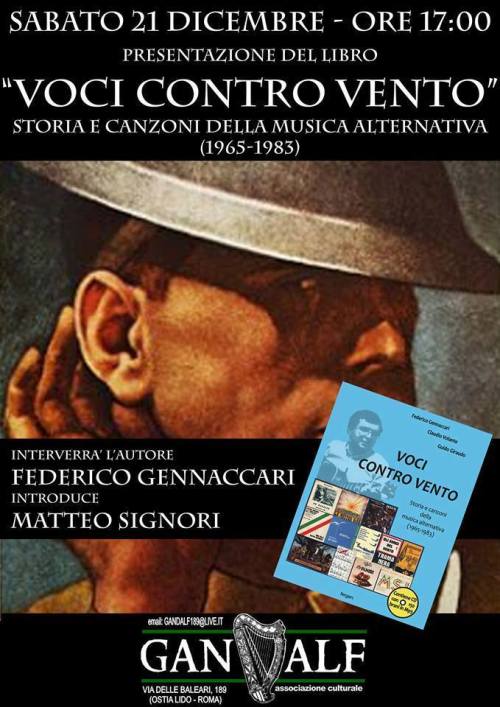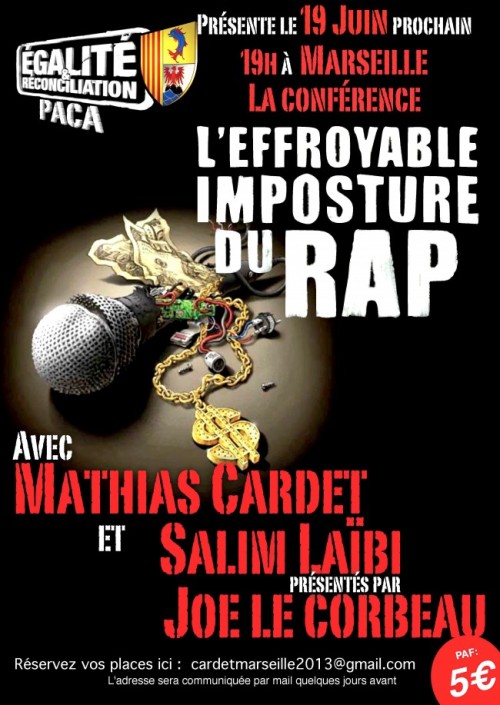mardi, 20 octobre 2015
La polyphonie du monde
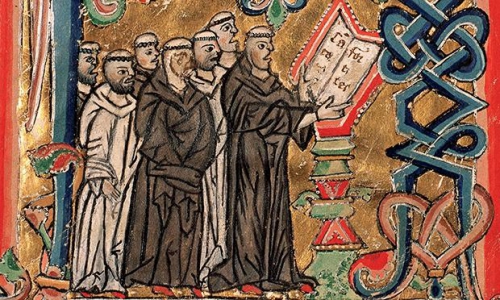
La polyphonie du monde
par Jean-François Gautier
Ex: http://www.institut-iliade.com
Intervention de Jean-François Gautier, docteur en philosophie, musicologue et étiopathe, lors du 2e colloque de l’Institut Iliade, Paris, Maison de la Chimie, 25 avril 2015.
La musique savante européenne est d’essence polyphonique. Cela signifie qu’elle conjugue au cours d’une même durée – d’exposition, ou d’écoute – plusieurs états sensibles superposés. Elle est la seule, dans l’ensemble des traditions musicales de la planète, à être ainsi construite. Elle retrouve en cela l’esprit du polythéisme antique, ressaisi à partir du XIII° siècle, et secondé par la mise au net d’une écriture solfégique des sons très précise.
L’antiquité hellénique distinguait neuf muses, autant de manières d’inspirer ou de styliser la profération des textes selon la matière traitée. Clio, avant de devenir la muse de l’Histoire, était celle qui inspirait l’épopée, narrée selon un certain type de mélodie et un certain type de rythme ; Érato inspirait la poésie amoureuse ; Euterpe prônait un autre type de poésie, à danser celle-là, avec d’autres mélodies et d’autres rythmes ; le domaine de Calliope était celui du « bien dire » ; celui de Thalie, le pastoral ; etc. Mais en ces temps-là, il n’était pas question de polyphonie.
On trouve un peu partout sur la planète des formes d’expression à deux ou trois voix, que l’on pourrait qualifier de polyphonies naïves, mais que la musicologie préfère qualifier d’hétérophonies. Il y a des hétérophonies corses, ou sardes ; il en existe aussi en Islande, en Géorgie, et dans le fond celtique qui, avec les cornemuses, superpose une basse constante et des variations mélodiques dans les aigus. Dans tous les cas, il s’agit de voix parallèles, sans guère d’autonomie et, d’une séquence à l’autre de la musique, elles sont reprises à l’identique comme dans les cantiques ou les chansons à versets et refrains : les différentes voix superposées y reviennent inchangées, répétées à l’infini, selon la quantité de paroles à chanter.
La « révolution polyphonique », une création monastique
La polyphonie qui naît dans le chantier de Notre-Dame de Paris à la fin du XIIe siècle et au début du XIIIe siècle est d’essence toute différente. Elle suppose qu’ait été au préalable résolu un problème technique autour duquel tournent les pratiques monastiques depuis la fin du IXe siècle, et que l’on peut résumer ainsi : tout son est caractérisé par sa hauteur, sa durée, son timbre et son intensité ; mais comment écrire – c’est-à-dire comment transmettre – les deux premières caractéristiques, hauteur et durée, pour qu’elles puissent être reprises par d’autres que soi, à la seule lecture, autrement qu’en faisant travailler la mémoire ?
Deux chantres en activité dans Notre-Dame en construction, Léonin et Pérotin, résolvent progressivement ce double problème, en utilisant des lignes superposées (les futures portées) pour repérer des hauteurs de sons, et différentes formes de notes (les futures rondes, blanches, noires, croches, etc.) pour indiquer leurs durées. Ce faisant, ils libèrent la mémoire de l’apprentissage par cœur du répertoire ecclésiastique ; mais ils se donnent surtout les moyens d’écrire des chants à plusieurs voix étagées. La rénovation de la musique européenne est là, dans la capacité qu’elle acquiert de rédiger des architectures à plusieurs parties, exactement comme la peinture pouvait réaliser des scènes à plusieurs éléments, paysages, personnages, animaux, etc.
Il est à noter que ce souci d’écrire plusieurs voix superposées anime les musiciens au moment où, dans une civilisation encore marquée par des féodalités individualistes, jalouses de leurs indépendances, apparaît une idéologie politique qui va permettre d’unifier celles-ci. C’est le retour du vieux modèle trifonctionnel indo-européen, qui vise à faire coexister pacifiquement les fonctions sociales de ceux qui prient (oratores), qui se battent (bellatores) ou qui travaillent et produisent (laboratores). Un monde rénové apparaît, qui adopte la polyphonie comme sa manière propre de se réunir et de chanter.
De l’exercice spirituel à l’autonomie artistique
A partir de cette époque, deux types de musiques vont être pratiqués. Dans les monastères, ceux des réseaux de Cluny et de Cîteaux, la musique est celle de la cantillation grégorienne à une voix, ou à deux voix parallèles. Cette musique-là ne vise pas une émotion esthétique comprise pour elle-même. Il s’agit plutôt d’une forme d’exercice spirituel, de travail du souffle et de la voix, permettant de progresser, de note d’appui (arsis) en note de repos (thésis), vers la contemplation du mystère théologal (incarnation, ou rédemption) qui est la vérité non de la musique mais du texte chanté.
Dans le chantier de Notre-Dame de Paris, la musique à plusieurs voix devient quant à elle autonome par rapport au texte. Plus que servir une vérité préalable, le compositeur est surtout préoccupé par la compatibilité mélodique et rythmique des chants proférés ensemble, qui participent de la même architecture. Les polyphonies nouvelles s’accordent en effet à l’agencement du vaisseau basilical, avec des montées et des descentes de voix, parallèles ou non, articulées autour de notes-pivots équivalant à des clefs de voûte, tandis que d’autres voix dessinent des arcades, des transepts, des claires-voies et toute autre figure magnifiant la nef en construction tout autant que la communauté diverse réunie à l’office.
Les travaux de Pérotin et de Léonin forment la matière d’un Magnus Liber Organi (« Grand Livre de chants ») dont des copies circulent à partir de 1215-1220 dans tous les grands chantiers gothiques de France et de Flandres (Senlis, Laon, Soissons, Amiens, Mons, Louvain, Beauvais, etc.). L’école franco-flamande prospère ainsi, puis exporte ses techniques en Europe centrale et du Nord. Celles-ci présentent le double avantage de libérer la mémoire d’un apprentissage difficile, surtout dans les chants à plusieurs voix, et conséquemment d’étendre indéfiniment le répertoire, au moins auprès de ceux qui, d’une part, auront appris à écrire les notes, et d’autre part à les lire.
Des chantiers de Notre-Dame à l’opéra
L’école va ensuite essaimer vers l’Italie, restée à l’écart du mouvement gothique. Johannes Ciconia (v.1340-1411), un temps chanoine à Liège où il naquit, adapte les rigueurs de l’ars nova à la courbe mélodique italienne, tant à Padoue qu’à Florence ou à Venise. Son successeur Guillaume Dufay (v.1400-1474), né dans le Cambrésis, voyage lui aussi en Italie, attaché à la chapelle papale de Rome, puis à Florence et à Bologne avant de revenir à Cambrai. Il laisse une douzaine de Messes à trois ou quatre voix, dont une sur un thème de chanson profane, l’Homme armé, grand succès du XVe siècle, qui resservira dans toute l’Europe pour une quarantaine de Messes après la sienne, jusqu’au XVIIe siècle.
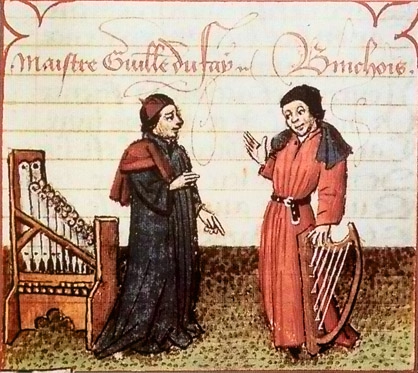 Jean de Vaerwere, dit Johannes Tinctoris, né en 1435 à Nivelles, dans le Brabant wallon, affine en 1477 le règles de l’écriture à plusieurs voix dans un remarquable traité de contrepoint, Liber de arte contrapuncti, suivi de trois autres traités tous publiés en Italie, qui vont servir de référence. Son successeur picard Josquin des Prés, qui mourra à Condé-sur-l’Escault en 1541, passera lui aussi par Milan, la Sixtine romaine et Ferrare. La délocalisation franco-flamande est totale. D’Andrea Gabrieli (Venise) à Palestrina (Rome) en passant par Ingenieri (Crémone) ou Monteverdi (Mantoue), tous les grands maîtres italiens sont formés par des Nordiques.
Jean de Vaerwere, dit Johannes Tinctoris, né en 1435 à Nivelles, dans le Brabant wallon, affine en 1477 le règles de l’écriture à plusieurs voix dans un remarquable traité de contrepoint, Liber de arte contrapuncti, suivi de trois autres traités tous publiés en Italie, qui vont servir de référence. Son successeur picard Josquin des Prés, qui mourra à Condé-sur-l’Escault en 1541, passera lui aussi par Milan, la Sixtine romaine et Ferrare. La délocalisation franco-flamande est totale. D’Andrea Gabrieli (Venise) à Palestrina (Rome) en passant par Ingenieri (Crémone) ou Monteverdi (Mantoue), tous les grands maîtres italiens sont formés par des Nordiques.
L’art polyphonique construit avec eux, et pour l’oreille, un espace de pluralités audibles ensemble, même si l’auditeur ne les perçoit pas les unes les autres comme distinctement différentes. L’apport de cet art nouveau est décisif dans l’esthétique continentale. En même temps que des érudits comme Pic de la Mirandole ou Marcile Ficin diffusent par des traductions et des adaptations les grands écrits de l’antiquité polythéiste, les musiciens s’apprennent à bâtir des partitions dans lesquelles, comme sur l’Olympe, les voix divergentes ne sont pas tenues pour contradictoires mais, au contraire, conjuguées avec plaisir.
Cet art des voix combinées se double en Italie d’un art instrumental autonome, qui acquiert une liberté que l’école franco-flamande n’avait pas connue. Bientôt, ce sont les maîtres italiens qui vont initier leurs confrères européens aux nouvelles formes instrumentales et vocales développées dans la péninsule. Notamment l’opéra, un nouvel art théâtral et chanté (Orfeo, 1607) qui va parler en italien deux siècles durant dans toute l’Europe, même sur les scènes londoniennes.
De l’extension de « l’art des pluriels » à la césure contemporaine
L’art des pluriels conjugués ne cesse de plaire. L’Orfeo de Monteverdi (1607) dit en même temps bios et thanatos, la vie et la mort. La cantate BWV 60 de Bach (1723) chante de concert les deux motifs opposés de la crainte (Fucht) et de l’espérance (Hoffnung). La Symphonie Fantastique (1830) de Berlioz dit dans le même mouvement un Dies Irae et une ronde de Sabbat de sorcières. Désir (Eros) et Discorde (Eris) dominent le Tristan (1865) de Wagner. Dans la Mer (1905), Debussy combine des rythmes de houles, de vagues, de crêtes et d’écumes qui semblaient incompatibles. Tout ce polythématisme musical porte vers les sens l’émotion jamais résolue de la même énigme antique, celle de l’essentialité des contraires. Quelque chose comme Dionysos et Apollon racontés ensemble, tant ils sont inséparables. Ou Clio, Euterpe, Érato et Calliope conversant en chœur, sans tomber dans la cacophonie.
Le XXe siècle, après Ravel et Poulenc, inaugure une césure brutale d’avec cette tradition. La technique dite « dodécaphonique » prônée par nombre d’écoles modernes vise la maîtrise dogmatique de l’écriture plus que l’art des sensations sollicitées chez l’auditeur. Comme pour les installations en peinture ou les performances en sculpture, ou pour la mise en fonction d’une machine à laver, il devient bientôt indispensable de disposer au concert d’un mode d’emploi des œuvres. D’où le recours des mélomanes à une muséographie insensée, qui réactualise sans fin les œuvres du passé faute de disposer d’une actualité continuatrice de la vocation historique et artistique de l’Europe musicale.
Jean-François Gautier
00:05 Publié dans Musique, Musique | Lien permanent | Commentaires (0) | Tags : musique, musique polyphonique, polyphonie, philosophie, philosophie de la musique, musicologie |  |
|  del.icio.us |
del.icio.us |  |
|  Digg |
Digg | ![]() Facebook
Facebook
dimanche, 13 septembre 2015
Heiliges Römisches Reich deutscher Nation
Heiliges Römisches Reich deutscher Nation
Ich stand auf hohem Berge:
Ich stand auf hohem Berge
sah runter ins tiefe Tal
Ein Schifflein sah ich schweben
darin drei Grafen warn.
Der jüngste von den Grafen
der in dem Schifflein saß
gab mir einmal zu trinken
aus einem venedischen Glas
"Ach Mädchen, du wärst schön genug,
wärst Du nur ein wenig reich;
fürwahr, ich wollt Dich nehmen,
wär´n wir einander gleich."
Er zog von seinem Finger
ein goldenes Ringelein.
"Nimm hin, Du Hübsche, Feine,
das soll dein Denkmal sein."
Was soll ich mit dem Ringe,
den ich nicht tragen kann?
Ich bin ein armes Mädchen,
das stehet mir nicht an.
Und weil ich ja nicht reich bin,
daß es dem Herren frommt,
will ich die Zeit abwarten,
bis meinesgleichen kommt."
"Wenn deinesgleichen nun nicht kommt,
was willst du fangen an?"
"Dann geh ich in ein Kloster,
will werden eine Nonn´."
Es stand wohl an ein Vierteljahr,
dem Grafen träumte es schwer,
daß sein herzallerliebster Schatz,
ins Kloster gegangen wär.
"Steh auf, mein Knecht und tummle Dich,
sattle mir und dir ein Pferd;
Wir wollen reiten Tag und Nacht,
der Weg ist des Reitens wert!"
Und als der Graf geritten kam,
wohl vor des Klosters Tür,
fragt er nach seiner Liebsten,
ob sie wohl darinnen wär.
Sie kam heraus geschritten,
in einem schneeweißen Kleid.
Ihr Haar war abgeschnitten,
zur Nonn´ war sie bereit.
Sie kam mit einem Becher,
den sie dem Ritter bot;
er trank und ein paar Stunden
danach war er schon tot.
Ihr Mädchen laßt Euch raten,
schaut nicht nach Geld und Gut.
Sucht Euch einen braven Burschen,
der euch gefallen tut.
00:05 Publié dans Histoire, Musique, Musique | Lien permanent | Commentaires (0) | Tags : musique, allemagne, saint-empire, saint-empire romain de la nation germanique, tradition |  |
|  del.icio.us |
del.icio.us |  |
|  Digg |
Digg | ![]() Facebook
Facebook
jeudi, 07 mai 2015
Le clash des civilisations au prisme de la musique classique
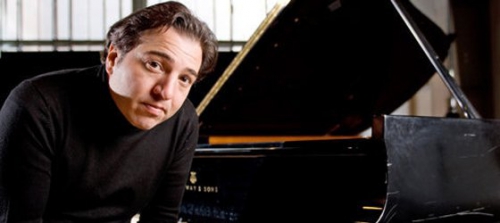
À ma grande honte, je ne connaissais pas Fazıl Say. Dimanche 19 avril, j’ai assisté à un concert de lui, avec l’Orpheus Chamber Orchestra, dans le cadre du festival Heidelberger Frühling.
Turc d’Ankara, Fazıl Say est un pianiste renommé et un compositeur de talent qui puise son inspiration dans les rythmes populaires, comme Bartók, Enesco ou Kodály. Il a attiré l’attention sur lui en 2013 quand il eut maille à partir avec les autorités de son pays, en raison de plusieurs tweets où il affirmait son athéisme, se moquait du muezzin trop pressé et citait deux vers d’Omar Khayyām :
Vous dites qu’il y coule des rivières de vin, le paradis est-il une taverne ?
Vous dites qu’à chaque croyant sera donné deux houris, le paradis est-il un bordel ?
Ces mots sacrilèges ont valu à Fazıl Say d’être condamné pour blasphème à 10 mois de prison avec sursis. Ne riez pas, amis lecteurs, l’islam convient aux esprits simples, comme à cette malheureuse Inès de Roubaix, l’épouse de Kevin, qui apprend l’arabe à ses enfants car c’est la langue qu’ils auront à parler au paradis, et les mêmes sornettes – houris et rivières de lait et de miel – sont promises à ceux qui se font exploser la tronche dans des attentats-suicides.
Rappelons que Khayyām, redécouvert par Fitzgerald au XIXe siècle, est avec Hafez, dont Goethe s’inspira dans son recueil Le Divan, et Saadi l’un des trois grands poètes de la Perse islamique. Khayyām, bon vivant fort mécréant, amateur de femmes et de vin, eut à pâtir de la vindicte des bigots. Persécuté et sans postérité, comme la plupart des artistes et des érudits non théologiens sous le joug islamique, il ne doit d’être connu qu’à l’intérêt que les Occidentaux lui ont porté.
Comme rien n’est simple, la Turquie de Fazıl Say n’en abrite pas moins l’une des confréries soufies les plus réputées de l’islam, celle des derviches tourneurs, sommet de la spiritualité musulmane, l’équivalent des ordres mendiants chez nous, quand la religion se libère de toutes attaches prosaïques, et Istanbul est riche des plus beaux monuments de l’art islamique.
Preuve, s’il en est, à l’encontre des butors qui vous agonisent de noms d’oiseau quand vous faites mine de dire un mot gentil sur l’islam, que la civilisation musulmane a aussi produit de beaux fruits, certes sur les décombres des civilisations précédentes, comme pour les vampiriser, et qu’elle ne crée plus rien depuis quatre siècles et le glorieux règne de Soliman le Magnifique ou celui de Shah Abbas Ier en Iran, le bâtisseur de l’Ispahan moderne.
La Turquie d’aujourd’hui est dans l’entre-deux de l’Orient et de l’Occident. Istanbul connaît une intense vie musicale, et plusieurs orchestres philharmoniques y ont acquis une renommée internationale. Les succès d’un Fazıl Say en attestent.
Peut-être la musique symphonique, avec l’opéra, est-elle le signe le plus évident de l’unification du monde sur le modèle occidental. Elle a gagné les Amériques, puis l’Asie. A contrario des pays qui n’ont pas, ou plus, d’orchestres philharmoniques, au Moyen-Orient et en Afrique, qui dessinent une carte d’un clash des civilisations, ou des cultures, n’en déplaise à l’ami Gauthier, autrement que dans la conception martiale et militariste des néo-conservateurs états-uniens.
Il faut davantage de Fazıl Say dans le monde musulman car la musique symphonique adoucit les mœurs des frustes et des barbares.
00:05 Publié dans Musique, Musique | Lien permanent | Commentaires (0) | Tags : musique, piano, fazil say |  |
|  del.icio.us |
del.icio.us |  |
|  Digg |
Digg | ![]() Facebook
Facebook
lundi, 08 décembre 2014
Four hours of Irish Rebel Music
Four hours of Irish Rebel Music
Find me on Facebook -
https://www.facebook.com/profile.php?...
https://www.facebook.com/poblachtach....
1. Loughgall Martyrs - Charlie and the Bhoys 0:00:00
2. The Ballad of Burns and Moley - Joe Mc 0:04:26
3. Song for Marcella - Brendan 'Bik' McFarlane and IRA POW's in the H-Blocks
4. Volunteer Brendan Watters - Justice (Damien Quinn)
5. Sean South - Rebel Voice
6. Willie and Danny - Athenrye
7. Give Ireland back to the Irish - Charlie and the Bhoys
8. Aug Weidersehen to Crossmaglen and Tiocfaidh ár lá - Shan Nos
9. Sad Song for Susan - Brendan 'Bik' McFarlane
10. Free the People - Athenrye
11. Black Watch - Spirit of Freedom
12. Let the People sing and take it down from the Mast Irish Traitors - Shan Nos
13. Jackets Green - Shebeen and Friends
14. The Two Brendans - Shan Nos
15. Raymond McCreesh - Padraig Mór
16. Dominic McGlinchey - Claymore
17. Ireland Unfree - Justice (Damien Quinn)
18. Irish Citizen Army - Ray Collins
19. The Legend - Damien Quinn
20. Séan South - Shan Nos
21. Women of Ireland - Pangur Ban
22. Kinky Boots - The Irish Brigade
23. Sunday Bloody Sunday - Charlie and the Bhoys
24. Edentubber Martyrs - Aine Woods
25. Ambush at Clonoe - The Irish Brigade
26. The Ballad of Seamus Harvey and Gerard McGlynn - The Irish Brigade
27. Tony McBride - The Irish Brigade
28. Kevin Lynch - The Irish Brigade
29. Eamonn Wright
30. Reverend Willie McCrea - Summerfly
31. Snipers Promise - Claymore
32. Lullaby to Heaven - Clan Carney
33. The Ballad of Fergal Caraher - Damien Quinn (Justice)
34. Seamus Harvey - Johnny Donegan
35. Joseph McManus - Spirit of Freedom
36. Brendan Hughes (Warrior from West Belfast) - The Irish Brigade
37. Martin McCaughey and Dessie Grew - Spirit of Freedom
38. George and Pop - Erin Go Bragh (formerly The Players Brigade)
39. Viva la Quinta Brigada - Charlie and the Bhoys
40. The Man from the Daily Mail - Spirit of Freedom
41. South Armagh Sniper - Joe Mc
42. Eugene Martin - Joe Mc
43. Peter Cleary - Joe Mc
44. The Mull of Kintyre - Finin
45. Fenians of the Rock - The Irish Brigade
46. The Downing Street Mortar - The Irish Brigade
47. I'd love to shove her - The Irish Brigade
48. The Supergrass Song - The Irish Brigade
49. Disband the RUC - Shebeen
50. Ordinary Sunday - Athenrye
51. Crossmaglen - Athenrye
52. The Hills around Dunloy - The Irish Brigade
53. The Ballad of Seamus McIlwainne - The Irish Brigade
54. The Lonesome Boatmen - The Irish Brigade
55. Pearse Jordan - Gary Óg
56. The Ballad of Seamus Woods - Gerry Cunningham
57. The Ballad of Eddie and Paddy - Michael Kelly
58. Brixton Busters - The Irish Brigade
59. A Rebel Song - Spirit of Freedom
60. The Ballad of Mairéad Farrell - Rachel Fitzgerald
61. The youngest of the them all - Michael Meehan
62. The Smuggler - Pangur Ban
63. This Land, God Save Ireland and A Nation once Again - Justice
00:05 Publié dans Musique, Musique | Lien permanent | Commentaires (0) | Tags : musique, musique irlandaise, irlande, pays celtiques, celtisme |  |
|  del.icio.us |
del.icio.us |  |
|  Digg |
Digg | ![]() Facebook
Facebook
vendredi, 05 décembre 2014
Three Hours of Irish Rebel Music
Three Hours of Irish Rebel Music
Song and Artist names in the description below
Nearly 50 Well Known Irish Rebel Songs from Past to Present
Having problems loading? Just refresh then click on the second button on the right that says settings and downgrade the quality of the video to 144p. Usually when your computer is running slow it means you haven't used it in a while, it's infected with viruses or you have a terrible internet connection (either because of where you live, or your provider is unreliable).
Song List
Name and then Artist
1. Terrorist or Dreamer - Brendan 'Bik' McFarlane (Former IRA Prisoner) 0:00
2. Farewell to Bellaghy - Gary Óg (Lead Vocalist of the band Eire Óg - Young Ireland) 6:53
3. Bring them home - Charlie and the Bhoys 10:37
4. Only Our Rivers Run Free - Gary Óg 14:05
5. Death before revenge - The Players Brigade now called Erin Go Bragh
6. Drumnakilly Ambush - The Irish Brigade
7. Sean South of Garryowen - Charlie and the bhoys
8. One Shot Paddy - Justice
9. Crossmaglen - Shan Nos
10. God Save Ireland - Charlie and the Bhoys
11. Armagh Sniper - Athenrye
12. Finnegans Wake - Celtic Connection
13. The two Brendans - The Players Brigade
14. Loughgall Ambush Martyrs - The Irish Brigade
15. Go on home British Soldiers - Eire Óg
16. My old mans a Provo - The Irish Brigade
17. SAM Song (ooh ahh up the ra) - Eire Óg
18. James Connolly - Charlie and the Bhoys
19. Those Protestant men - The Wolfe Tones
20. This land is your land - Charlie and the Bhoys
21. The Ballad of Billy Reid - Fighting Men of Crossmaglen
22. Come out you Black n'Tans - Charlie and the Bhoys
23. The Men behind the wire - The Wolfe Tones
24. Michael Collins - The Wolfe Tones
25. Green white and gold - The Irish Brigade
26 & 27. My Little Armalite, Broad Black Brimmer, Merry Ploughboy and The helicopter song - The Irish Brigade
28. Roll of honour - The Players Brigade
29. The Rifles of the IRA - Fighting Men of Crossmaglen
30. Broad Black Brimmer - The Wolfe Tones
31. Wearing of the green - The Wolfe Tones
32. The Informer - Padraig Mór
33. The Patriot game - Kathleen Largey
34. The town I loved so well - Kathleen Largey
35. Broad Black Brimmer and Dirty old town - The Players Brigade
36. The Foggy Dew - The Wolfe Tones
37. Stuff your Decommission - Spirit of Freedom
38. The Belfast Brigade - Fighting men of Crossmaglen
39. Old Clonoe - Shee-Vawn
40. Take it down from the mast and free our lads in Crumlin Gaol (Jail) - Athenrye
41. My Youngest Son came home today (Irish Republican Funeral Song) - Mary Black
42. Roisin Dubh (Black Rose - Irish Republican Funeral Song)
43. A Nation once again - The Wolfe Tones
44. Hughes lives on - The Irish Brigade
45. The boys from county Cork - The Irish Brigade
46. The Boys of the Old Brigade - The Wolfe Tones
00:05 Publié dans Musique, Musique | Lien permanent | Commentaires (0) | Tags : musique, irlande, musique irlandaise, celtisme, pays celtiques |  |
|  del.icio.us |
del.icio.us |  |
|  Digg |
Digg | ![]() Facebook
Facebook
mercredi, 03 décembre 2014
Mark Breddan sur le face voilée du Rap
Mark Breddan
sur le face voilée du Rap
Avec un véritable travail d’immersion dans le monde musicale du Rap, il a publié "La face voilée du Rap". Avec lui, nous révélons les liaisons dangereuses entre ce style venu des Etats-Unis et l’Islam.
http://www.tvlibertes.com/
https://www.facebook.com/tvlibertes
https://twitter.com/tvlofficiel
Pour nous soutenir :
http://www.tvlibertes.com/don/
Ou directement via Facebook :
https://www.facebook.com/tvlibertes/a...
00:05 Publié dans Actualité, Musique, Musique | Lien permanent | Commentaires (0) | Tags : actualité, rap, musique |  |
|  del.icio.us |
del.icio.us |  |
|  Digg |
Digg | ![]() Facebook
Facebook
mercredi, 19 novembre 2014
Edward Elgar
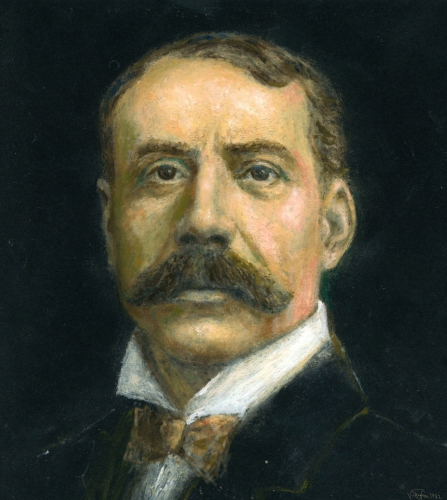
Edward Elgar
By Jonathan Bowden
Ex: http://www.counter-currents.com
Editor’s Note:
This is the transcript by L. and D.H. of Jonathan Bowden’s talk on Edward Elgar, which you can listen to with musical examples here [2]. Please post any corrections below as comments.
We’re here today to talk about Edward Elgar, the great composer of the English renaissance in modern music – by which I mean 20th-century music. There’s an enormous gap in our island’s musicology between Elizabeth’s time when some major, largely Roman Catholic, polyphonic composers like Byrd and Tallis and the first John Taverner and Davenport and others came to the fore, and Henry Purcell. Purcell lived in and around the time of the Great Fire of London from the restoration of the Stuart monarchy after the interregnum of Cromwell and the Civil War until the turn of the 1700s. He died, like Keats, of tuberculosis, so it is essentially believed.
Now, Purcell was a great genius of structure and order and composition and is described somewhat loosely as the English Mozart. Byrd and Tallis looked back through what for them was the modern idiom of polyphony to medieval plainsong and chant and high Christian Catholic music. We factor forward across two centuries basically, from 1700 to 1900, and there is not really an English composer of universal – never mind European – significance.
People come and go, and there are academic composers like Parry and so on towards the end of the 19th century, with whom Elgar was initially compared. But in actual fact, apart maybe from Sullivan’s Irish Symphony in 1864, there is not too much to speak of. What fills the musical landscape of our society during those 200 years is largely French and Italianate musical theater and opera, which, paradoxically, had begun back under the culture of the Puritans in the English Civil War where a lot of theater, including Shakespeare, was banned. But musical performances which were non-liturgical and non-religious were allowed. Therefore, women with large sort of busts and bodices and so on would perform secular pieces on stage, completely at variance with many Puritan ideas, but as long as it wasn’t religious it was okay. And that type of musical dramaturgy dominated our musical life for 200 years. And the view grew up on the continent that during the great era of largely Germanic symphonies, defined principally by Mozart and by Beethoven, we reached a position in England where there really was no music that was at all interesting or of universal import to the European civilization. Certainly, any music that could be talked about was parochial.
Elgar completely redefines the nature of English music, English classical music, and high art music of a British character. He’s also not a lone genius because, partly opened up by his example, there come several generations of composers who contain individuals like John Ireland was heavily influenced by him and Bax and Bliss, who wrote a lot of ballet scores, and eventually Britten and Tippett, despite his Left-wing views, and Birtwistle and Mathias, a Welsh composer of largely choral works, many of them put on by the BBC Third programme as it was. Sir Peter Maxwell Davies at the present day, who looks to post-modernity, but also very early and even pre-Baroque musical styles to draw inspiration from, and then goes back up to the present day again to complete his cycle of eight symphonies and who lives up in the Orkney Islands is a continuation of a tradition that really began with Elgar.
Elgar moves English people in a way that no other composer–certainly none of those that I’ve just mentioned–really does. He speaks emotionally and from the heart and subjectively to the impressionism of the English. There is something slightly magical and indefinable about his musicology, whether people are listening to the sort of imperialist performances like “Land of Hope and Glory,” like “Rule Brittania” orchestrated by him, like Pomp and Circumstance, whether they’re listening to things to do with Victoria’s jubilee, or whether they go much deeper into works like the first two finished symphonies or the third symphony which would be finished from impressionistic notes long after his death by a contemporary, middling, and rather academic composer, or whether they’re listening to Cockaigne or whether they’re listening to The Kingdom or whether they’re listening to the mysticism related to his own personal Catholic faith of The Dream of Gerontius, his music draws English people in, in a way that really words cannot define.
There’s an interesting story that I’d like to share with you just for a moment that shows you the power of Elgar beyond all political and social affiliations as regards Englishness. Tony Banks is, in many ways, a very decadent and Left-wing politician who’s just left the House of Commons saying he despises most of his constituents who happen to live in a part of east London called Newham. Sixty percent of them are black, so I don’t know what that says about Banks’ particular take on all that. But he was a very Left-wing member of the GLC under Livingstone in the 1980s. When Thatcher shut that local authority down for internal political reasons within the British establishment – she didn’t like the way Livingstone was introducing taxes into London and so on, and was under business pressure to do so – the GLC on their final afternoon played Elgar throughout the three or four hours when the bailiffs were coming in to turf them out of what was then County Hall, which is now a private sector tower block.
And they played the Enigma Variations, and you had people like Banks who, in many ways, has been party to political and social programs and processes that have torn most of what this country once was down over the last 30, 40, 50 years – and he’s just one individual. But you have him in tears over the Enigma Variations, which represents the quintessence of Englishness. And you see the power even in the most unlikely places that this music has when it’s particularly manifest in relation to our nationality. There is something about the Worcestershire countryside; there is something about England, greenness and lushness and sweetness and harshness; there is something about the weather; there is something about the insularity both as a source of strength, of imaginativeness, of fairy tale lights, of romantic and imaginative introspection, but also sentimentality which is there in this man’s music and which, really, is in no-one else.
People like Purcell were great composers of the European type who happen to be English, but Elgar is a great English composer who is largely self-created because, unlike Vaughan Williams and unlike Bax who draw on a lot of Celtic folklore – but both of them went back to folk traditions that pre-exist higher or classical forms of white or Indo-European or Aryan music, Elgar created out of his own person; he created for himself in terms of his own deep emotional longing and desires. He also created in a very impressionistic way. After a day’s teaching, for example – because that’s what he did to survive for most of his adult life – he would play on the piano. He would play in an almost sort of stream of consciousness and free association way. He would note things down, how certain conjunctions of the diatonic register, certain forms of tonal composition, would work. He’d play them over to the wife again and note them all down. He’d go away and stick things to the backs of chairs in his study and so on and see that there would be an overlap between that piece over there and this bit over here, and, gradually, the texture of a larger work would be built up step-by-step organically, almost like pottering about your garden essentially in terms of his mental musicianship.
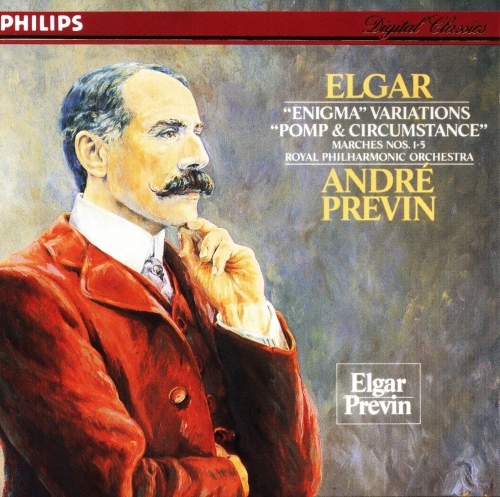
He was a very good violinist, a very good cello player when he was young. He didn’t really master any other instruments, but he became a major conductor of his own and other music, because British music was beginning to burgeon then, as I’ve already mentioned, towards the end of his life. He also hired many individual virtuosi and people who could actually play many of his pieces. It’s important to realize that there were several Elgars and that in many respects he was a very private man. His ultra-Tory politics and imperial manner and “blimpishness” together with figures like Conan Doyle, Kipling, and Rider Haggard and so on, many of whom in that Edwardian and Victorian era he was deeply, personally associated with and was friendly with, can give people the wrong impression about him.
There is a certain Leftist distaste for Elgar or for politics of imperialism with which he began Victoriana and with which he can be associated. But at the end of the day, he was a radical rather than a purely conservative, in the sense of restorationist, figure. He’s a man who wanted to bring forward a deep, romantic sensibility and articulate it through an individual vision of genius. Now “genius” is a concept itself which is unfashionable today, as is beauty, but Elgar believed in both. But true to a lot of English and British visual art, personhood and individual character – character above all – was supremely important. Elgar was, in many peoples’ minds, whether bohemian or otherwise, an eccentric. Amongst anglers, amongst people who like to row, amongst people who like to cycle in the countryside around where he lived, there’s a degree to which even amongst these rather more conventional and slightly staid, inartistic types he always stood out as a bit of an eccentric. Whereas amongst the artists he often brought to them the manner of the Victorian drawing-room and the Imperialist grand-uncle. So he existed as a “straight” amongst the bohemians and as an alternative person amongst people who were on a more conventional and bourgeois register.
Like all artists he existed between worlds, because the great point of an artistic sensibility is observation and analyzing life from without, because although his music is primarily about emotional sentiment, art is not a matter of sentiment. It’s not about emoting or sentimentality. Art is a hard, ultimately, rather than a soft discourse. Deep down it’s more objective than subjective. It’s the objectification which is what art is about, creating objects out of emotion. Science is about the objects of the natural world, of that which can be ratiocinated from the front of the brain, whereas all artistic matters are about emotion and lie deep in the recesses of the back brain in particular. But there’s a science of them, there’s a logic to them, there’s a knowledge of them and how the processes which connect with people’s emotions and are translated into form actually work. And music of all forms – which in some ways is why it’s always the most difficult to talk about in my view – is the form which is beyond all of the others because its language, its semiotic, is universal for all human beings within and beyond race. It’s almost the one art form that can impact on all minds and on all states of consciousness. Apart from the completely tone-deaf and deaf from birth there’s virtually nobody who can’t be moved by music. One pauses to think here that the greatest musician in the European classical tradition is Beethoven who was deaf for a significant proportion of his life and can hardly play properly towards the end, but the music was pure inside, and a lot of it was done by sight in terms of actual reading and close reading of the score. There are musicians to this day who actually relate more to the eye and the text, if you like – they’re textualists – rather than the ear, although for nearly everyone, of course, who works in the area it’s a combination of the two.
Now, Elgar epitomizes certain forms of Englishness which, for a long time, stood rejected at the heart of the continental culture. English music, even its revival, through Bax, through Bliss, through Vaughan Williams, through Ireland, through Tippett, through Britten, through Britten’s operas via Elgar, even looking back to people like Sullivan and Parry and so on, forward to modernists of a certain moment like Birtwistle and not Mathias but certainly Sir Maxwell Davies. Despite all of these and despite the recognition that continental musicology has given to them and large books by Germanic critics like Ernst Naumann have now been written about English music in the 20th century there is still this slight belittling of English musicology in continental sensibility, this sort of view that it’s all a bit Constance Lambert and a bit more, that it’s too saccharine, and it’s too sweet, that it lacks Germanic rigour and harshness, if you like, in these great architectural cathedrals of sound that someone like Bruckner creates, or pure concern with form or the expression of very lurid and over-the-top operatic emotion, that somehow there’s a certain quaintness to it, a certain shyness, a certain internal privacy, a certain softness and sweetness. This is, at times, a continental view of English music.
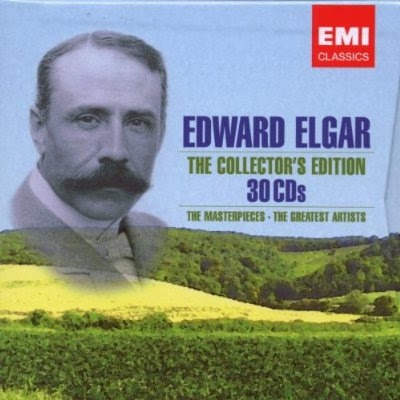 But this music that is Elgar’s — which is, racially speaking, a combination of Germanic and Celtic strands musically, within one particular personality — creates a feeling that English people respond to with deep sonorousness in joy and in sadness. And there is certainly joy and power and pageantry in Elgar’s music. But there’s also sadness as well. Because reading the life closely and with an eye upon the text you can really sense that there’s a bit of a sine curve in Elgar’s personality, and there are deep troughs as well as great ecstasies. There is the fact that after a major period of creation like the Second Symphony, he needed to rest up and couldn’t do very much creating for quite long time. After his wife died, I think in 1920 or thereabouts, there’s a great falling away. And apart from occasional pieces – an unfinished opera I think based on King Henry VIII – until his death, there wasn’t too much done. Elgar also realised that after the Great War there had been a high point of what critics would call jingoistic patriotism with which he had become partly associated, let’s be frank. And there was a great falling away of interest in his music during the 1920s. Although no-one, even his detractors, would actually say that he wasn’t very, very significant.
But this music that is Elgar’s — which is, racially speaking, a combination of Germanic and Celtic strands musically, within one particular personality — creates a feeling that English people respond to with deep sonorousness in joy and in sadness. And there is certainly joy and power and pageantry in Elgar’s music. But there’s also sadness as well. Because reading the life closely and with an eye upon the text you can really sense that there’s a bit of a sine curve in Elgar’s personality, and there are deep troughs as well as great ecstasies. There is the fact that after a major period of creation like the Second Symphony, he needed to rest up and couldn’t do very much creating for quite long time. After his wife died, I think in 1920 or thereabouts, there’s a great falling away. And apart from occasional pieces – an unfinished opera I think based on King Henry VIII – until his death, there wasn’t too much done. Elgar also realised that after the Great War there had been a high point of what critics would call jingoistic patriotism with which he had become partly associated, let’s be frank. And there was a great falling away of interest in his music during the 1920s. Although no-one, even his detractors, would actually say that he wasn’t very, very significant.
One piece that I would like to talk about in particular is The Dream of Gerontius, which is based upon a personal impression of Elgar’s religious ideas. His Roman Catholicism has never really been pushed that much although no-one’s particularly shied away from it in relation to his own specific biography. But it was there, and in an artistic way it was reasonably central to his life. His Catholicism had very little to do – if not nothing to do – with sectarianism. But what it was, was a personal religious tradition of transcendence, of the belief that you go beyond the body completely, which can lead in that theology to a disrespect for the body.
Now, The Dream of Gerontius is based upon a poem by Cardinal Newman. He was an important convert from the high Anglican Church to the Roman Catholic Church in England in the middle of the Victorian period, indeed the high Victorian period. He led a movement out of the clerisy of Oxford University at the time called first the Oxford Movement and then the Tractarians. To many people this is rather dry and archival and archaeological material, so to speak. But in the Victorian period for somebody important or for a group of people led by Newman to convert from the Anglican dispensation, which has now largely collapsed in our culture. Let’s face it, who listens to Rowan Williams now? For them to go over from that to Rome was an earthquake. It was a decisive change and it set people wondering what was happening to English Protestantism, so to say, in the 19th century.
The most mystical poem of a high Gerard Manley Hopkins type that Newman wrote was The Dream of Gerontius, upon which Elgar bases his particular work. There’s an interesting metaphoricisation of this piece in the Elgar museum, which is a private sector museum based near Worcester. They’re very odd there, if you want to film about all this. You’ve got to pay quite a lot to go in there and so on and so forth. We went round the cottage where he was born which is turned into a museum. But an American contemporary sculptor, modern but traditional in casting, has done a metaphoric vision in stone but in three dimensions obviously of The Dream of Gerontius, and there’s a figure, which is the soul, leaving the corpse, leaving the body after death, and none of us knows what happens technically when a body dies but there’s a certain energy which is obviously in it goes. Because a cadaver is just an inanimate object whereas anything that has organic life in it is so qualitatively different to that which doesn’t, that something which was there is gone. The big question, of course, is where and what energy there was there has gone.
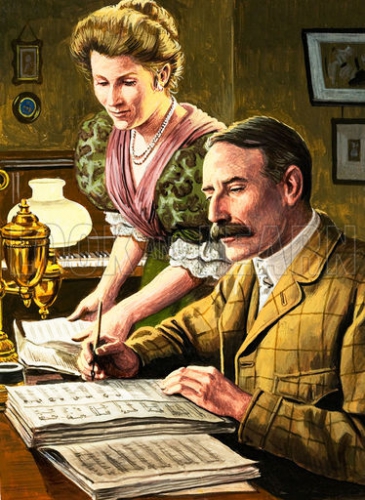 But in this particular relief the energy is going up out of the body and there are various sort of devilish, satanic creatures reminiscent of Hieronymus Bosch and so on clawing around the bottom or the pedestal of the sculpture, trying to drag the spirit down into matter, into present day, into the somatic, into the bodily. And there are angels, or angelic figures of some description – because it’s not an explicitly Christian sculpture actually – moving the spirit upwards and outwards and towards the light. And Elgar is always concerned with, if you like, certainly in this piece, a certain lightness and a certain delicacy of touch; strength with delicacy; music in some ways relating to the spirit of dance although he never really explicitly wrote for the dance the way Bliss did with pieces like Checkmate later on, now which have been revived towards the end of the 20th century by sir Vernon Handley and his influence at Liverpool Philharmonic, for example.
But in this particular relief the energy is going up out of the body and there are various sort of devilish, satanic creatures reminiscent of Hieronymus Bosch and so on clawing around the bottom or the pedestal of the sculpture, trying to drag the spirit down into matter, into present day, into the somatic, into the bodily. And there are angels, or angelic figures of some description – because it’s not an explicitly Christian sculpture actually – moving the spirit upwards and outwards and towards the light. And Elgar is always concerned with, if you like, certainly in this piece, a certain lightness and a certain delicacy of touch; strength with delicacy; music in some ways relating to the spirit of dance although he never really explicitly wrote for the dance the way Bliss did with pieces like Checkmate later on, now which have been revived towards the end of the 20th century by sir Vernon Handley and his influence at Liverpool Philharmonic, for example.
Now, I see Elgar as essentially as a deeply individuated and traditional artist who is subjective, emotional, sweet-tempered, slightly melancholic, very, very English, and concerned primarily with transcendence. But there are also great moments of joy and that martial patriotism that the English have and which is a sort of pageantry. I’ve always been struck by elements of English nationalism within the British context and how they differentiate it from the more Celtic parts of the British peoples, such as the Irish, the Scottish, and the Welsh, against their own national feeling. There is in the English a slight softening or understatement of a more radical position and the need emotionally to express a radical feeling of patriotism and self-regard by using perhaps slightly softer tones and terms.
And this is why, in comparison to very militant expressions of national feeling, English people can stand to attention to things with sort of tears in their eyes and tears streaming down their faces and with extreme emotion and, sometimes, with very held-in violence as well that relates to these types of emotional forms that touch them very, very deeply and very much at the heart. It is that sort of belief that you can do an extraordinary thing and you don’t really necessarily want to be praised too much for it, at least in public afterwards. It’s that slight diffidence in the expression of that which otherwise would be radical which characterises partly the depth of Elgar’s music, partly the fact that it’s a certain sense of English sensibility unmasked, and there are certain cultural criticisms of the English viewed outside in that see ourselves, see the English people, as in part wearing a mask. Elgar’s music is the emotional expressiveness of the English people unrepressed and without a mask, with deep sonority relating to private and yet personal experiences of a general, generic character. It is also expressive of the European civilisation in high art music, but it is totally concentrated in the sensibility of these islands.
You can also hear a voice – a musical voice and a musical personality – coming out of this music from first to last. And when BBC Radio 3 in alliance with the Proms at the Royal Albert Hall produced the Third Symphony which is made up from scraps – absolute scraps and notes chucked about his study basically and pasted together by essentially an academic musicologist – immediately people realised it was him living again almost a century later, certainly 70 years later. And that voice, that sensibility, that sureness of note and pitch and tone came through yet again. And although maybe the Third Symphony, in inverted commas, has had much less impact than the first two, never mind the Enigma Variations, never mind The Dream of Gerontius, never mind the personal and impressionistic motifs based upon his friends like Jaeger and, later on, the composer Richter who took him up, notice again the Germanic influence that, although understanding the difference between the English and the Germanic, nevertheless cleaved to the English voice which was new and original and put the music of England and, later, Britain in its entirety back upon the map of European civilisation 200 years after the death of Henry Purcell.
Article printed from Counter-Currents Publishing: http://www.counter-currents.com
URL to article: http://www.counter-currents.com/2014/11/edward-elgar/
URLs in this post:
[1] Image: http://www.counter-currents.com/wp-content/uploads/2014/11/Edward_Elgar_posing_for_the_camera_1931.jpg
[2] here: http://www.counter-currents.com/2014/01/jonathan-bowden-on-edward-elgar/
[3] Image: http://www.counter-currents.com/wp-content/uploads/2014/11/RouseDreamofGerontius.jpg
00:03 Publié dans Musique, Musique | Lien permanent | Commentaires (0) | Tags : jonathan bowden, edgar elgar, musique, angleterre |  |
|  del.icio.us |
del.icio.us |  |
|  Digg |
Digg | ![]() Facebook
Facebook
samedi, 01 novembre 2014
CASSE-NOISETTE
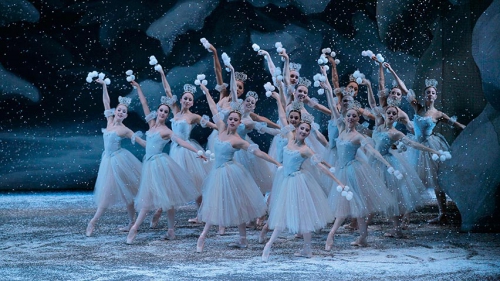
CASSE-NOISETTE
The Moscow City Ballet
au Cirque Royal de Bruxelles
Représentations
06/12/2014 | 20:00
07/12/2014 | 15:00
Réserver tickets
 02.218.20.15
02.218.20.15
 070.660.601
070.660.601
Tickets 06/12/2014
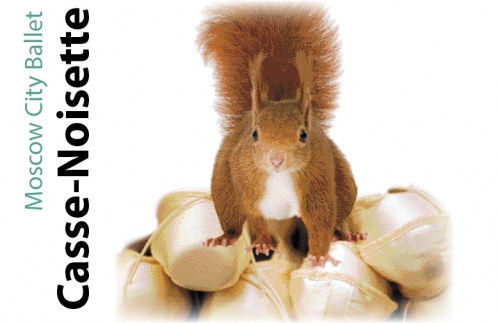
00:05 Publié dans Evénement, Musique, Musique | Lien permanent | Commentaires (0) | Tags : musique, casse-noisettes, tchaïkovski, événement, bruxelles |  |
|  del.icio.us |
del.icio.us |  |
|  Digg |
Digg | ![]() Facebook
Facebook
vendredi, 31 octobre 2014
LE LAC DES CYGNES
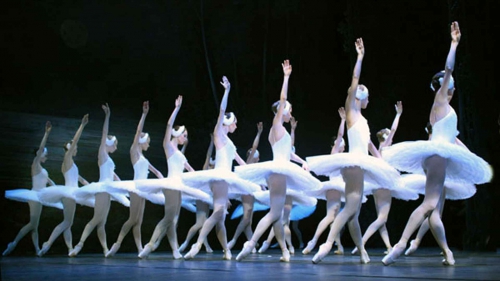
LE LAC DES CYGNES
The Moscow City Ballet
au Cirque Royal, Bruxelles
Représentations
04/12/2014 | 20:00
05/12/2014 | 20:00
Réserver tickets
 02.218.20.15
02.218.20.15
 070.660.601
070.660.601
Tickets 04/12/2014
En novembre 1988 Victor Smirnov-Golovanov, avec son épouse et danseuse, Ludmilla Nerubashenko ont fondé la première compagnie privée de ballet classique de Russie. La première tournée étrangère de la compagnie a eu lieu à Seoul en 1989 et depuis, la compagnie s’est présentée en Grande Bretagne, Irlande du Nord, Japon, Allemagne, Israël, Egypte, Taiwan, Hong Kong, Chine, Portugal, Finlande, Singapour, USA, Estonie, Chypre, Belgique, Luxembourg, Lituanie et bien sûr en Russie.
Depuis sa création le Moscow City Ballet a créé 10 ballets et a dansé plus de 20.000 représentations.
L’esthétique de la compagnie est basée sur la tradition du ballet russe, la technique de virtuose des danseurs ainsi qu’une profonde dramaturgie de chaque rôle. Les danseurs de la compagnie sont issus de grandes écoles chorégraphiques de Moscou, Saint Petersburg, Kiev et Perm. Certains ont dansé dans d’autres compagnies prestigieuses mais désireux de nouvelles expériences artistiques ont rejoint le Moscow City Ballet.
Victor Smirnov-Golovanov, soliste du prestigieux Ballet Bolchoï, élève des grands maîtres de ballet comme Balanchine, Robbins, Lavrovski et autres, a créé des chorégraphies pour des théâtres de Moscou, Kiev, Novossibirsk, Tachkent etc. Son expérience de créateur et son activité en tant que directeur artistique de l’Opéra d’Odessa l’ont encouragé à créer sa propre compagnie appelée d’abord « Jeunes Etoiles ». Les étoiles mondiales du ballet comme Nadiezda Pavlova, Youri Posochov, Tatiana Terechova, Ludmilla Semieniaka ont participé aux spectacles organisés par Victor Smirnov- Golovanov.
Malgré toutes les difficultés de son temps, son très grand talent artistique et sa persévérance lui ont permis de surpasser les risques liés à la création d’une compagnie artistique privée en gardant sa devise : ancienne tradition (Petipa, Ivanov, Gorski) – nouvelles étoiles !
Victor Smirnov-Golovanov est décédé le 22 avril 2013 à Moscou. Ne pas laisser perdre l’héritage artistique, continuer l’œuvre de son créateur sont les mots d’ordre de l’ensemble. Le maître a disparu, ses élèves continuent son œuvre ! La dernière création de Victor « Roméo et Juliette » est dédiée à son épouse Ludmilla qui l’accompagnait très fidèlement dans sa vie et ses créations et qui, aujourd’hui, continue l’œuvre commencée ensemble.
Née en 1955 à Odessa, après voir terminé ses études de ballet au Conservatoire de Kiev, Ludmilla est devenue soliste de l’Opéra d’Odessa.
En 1988 Ludmilla devint soliste et pédagogue du Moscow City Ballet et à partir de 1993 répétitrice principale de cette compagnie. Depuis le 22 avril 2013 elle en est la directrice artistique.
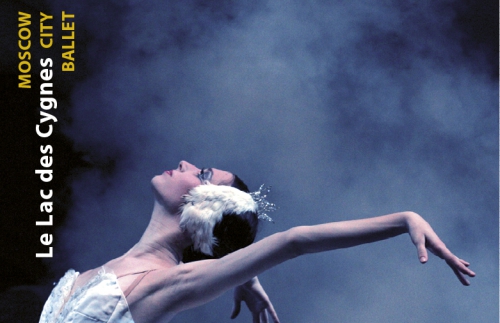
00:05 Publié dans Evénement, Musique, Musique | Lien permanent | Commentaires (0) | Tags : lac descygnes, tchaikovski, russie, musique, événement, bruxelles |  |
|  del.icio.us |
del.icio.us |  |
|  Digg |
Digg | ![]() Facebook
Facebook
jeudi, 30 octobre 2014
Nietzsche: Hymnus an das Leben
Friedrich Nietzsche
Hymnus an das Leben
00:05 Publié dans Musique, Musique, Philosophie | Lien permanent | Commentaires (0) | Tags : nietzsche, musique, philosophie |  |
|  del.icio.us |
del.icio.us |  |
|  Digg |
Digg | ![]() Facebook
Facebook
lundi, 07 juillet 2014
Empreintes celtiques : Loreena Mc Kennitt
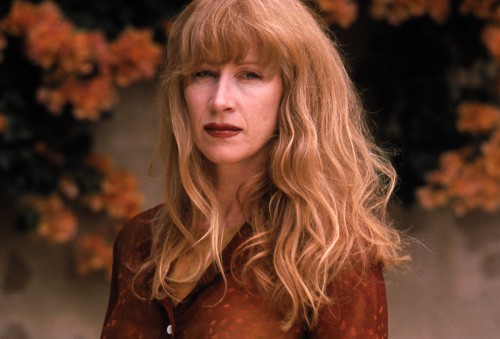
Rémy Valat
Ex: http://metamag.fr
00:05 Publié dans Musique, Musique | Lien permanent | Commentaires (0) | Tags : loreena mckennitt, celtisme, celtitude, musique celtique, musique, irlande |  |
|  del.icio.us |
del.icio.us |  |
|  Digg |
Digg | ![]() Facebook
Facebook
dimanche, 20 avril 2014
NSK
14:39 Publié dans Musique, Musique | Lien permanent | Commentaires (0) | Tags : musique, laibach, neue slowenische kunt |  |
|  del.icio.us |
del.icio.us |  |
|  Digg |
Digg | ![]() Facebook
Facebook
samedi, 15 mars 2014
Thierry Bouzard: la chanson engagée a changé de camp!
Thierry Bouzard: la chanson engagée a changé de camp!
00:05 Publié dans Musique, Musique | Lien permanent | Commentaires (0) | Tags : musique, chansons, chansons engagées, thierry bouzard |  |
|  del.icio.us |
del.icio.us |  |
|  Digg |
Digg | ![]() Facebook
Facebook
jeudi, 19 décembre 2013
Voci contro vento
00:05 Publié dans Evénement, Musique, Musique | Lien permanent | Commentaires (0) | Tags : événement, musique, italie, rome |  |
|  del.icio.us |
del.icio.us |  |
|  Digg |
Digg | ![]() Facebook
Facebook
dimanche, 13 octobre 2013
Concert du gouverneur militaire de Paris
21:02 Publié dans Evénement, Musique, Musique | Lien permanent | Commentaires (0) | Tags : musique, événement, paris, france, militaria |  |
|  del.icio.us |
del.icio.us |  |
|  Digg |
Digg | ![]() Facebook
Facebook
dimanche, 07 juillet 2013
El Drama wagneriano
POR
Maquetación: Manuel Q.
Papel blanco 90gr.
00:05 Publié dans Livre, Musique, Musique | Lien permanent | Commentaires (0) | Tags : livre, musique, richard wagner, wagner, houston stewart chamberlain |  |
|  del.icio.us |
del.icio.us |  |
|  Digg |
Digg | ![]() Facebook
Facebook
lundi, 17 juin 2013
Любо, братцы, любо - Кубанский казачий хор
00:05 Publié dans Militaria, Musique, Musique, Terres d'Europe, Terroirs et racines | Lien permanent | Commentaires (0) | Tags : cosaques, russie, kouban, musique, traditions populaires |  |
|  del.icio.us |
del.icio.us |  |
|  Digg |
Digg | ![]() Facebook
Facebook
samedi, 15 juin 2013
Chant des artilleurs
Chant des artilleurs
00:05 Publié dans Militaria, Musique, Musique | Lien permanent | Commentaires (0) | Tags : cosaques, artillerie, russie, musique |  |
|  del.icio.us |
del.icio.us |  |
|  Digg |
Digg | ![]() Facebook
Facebook
dimanche, 09 juin 2013
19 juin: conférence à Marseille
00:01 Publié dans Evénement, Musique, Musique | Lien permanent | Commentaires (0) | Tags : rap, musique, événement, conférence, marseille |  |
|  del.icio.us |
del.icio.us |  |
|  Digg |
Digg | ![]() Facebook
Facebook
mercredi, 05 juin 2013
Conférence de M. Cardet & K. Vasquez
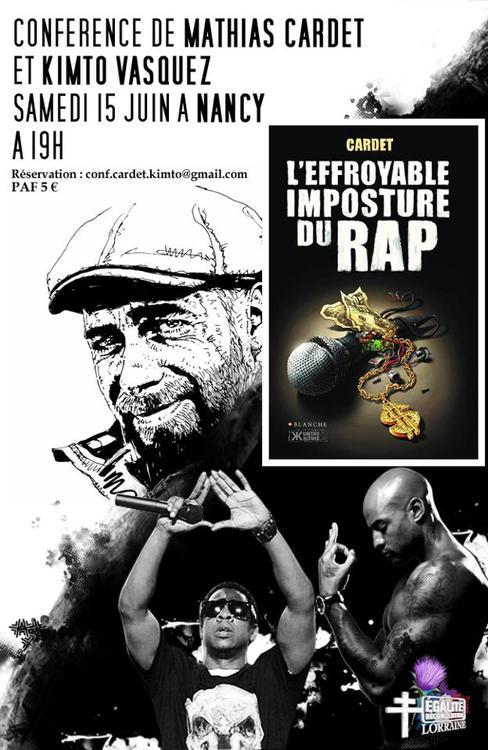
00:05 Publié dans Evénement, Musique, Musique | Lien permanent | Commentaires (0) | Tags : rap, musique, événement, nancy, lorraine |  |
|  del.icio.us |
del.icio.us |  |
|  Digg |
Digg | ![]() Facebook
Facebook
samedi, 01 juin 2013
Parsifal & the Possibility of Transcendence
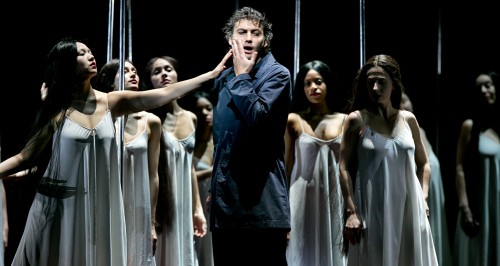
Wagner Bicentennial Symposium
Parsifal & the Possibility of Transcendence
By Christopher Pankhurst
Ex: http://www.counter-currents.com/
In 1878 Nietzsche sent a copy of his book Human, All Too Human to Richard Wagner. At the same time Wagner sent Nietzsche a copy of the verse for his opera Parsifal. Nietzsche was later to write that when received this text, “I felt as if I heard an ominous sound – as if two swords had crossed.”[1] Nietzsche had immediately realized that the two men had drifted irreparably apart. In Human, All Too Human, Nietzsche had made a decisive move against the Western metaphysical tradition and he saw the text of Parsifal as being deeply embedded within that tradition.
By the time of Tristan und Isolde and Parsifal Wagner had become immersed in the philosophy of Schopenhauer and he was able to infuse those works with a thoroughly Schopenhauerian atmosphere. In particular, Parsifal was the culmination of Wagner’s life’s work, and with its theme of redemption through compassion it fully articulated his mature Schopenhauerian beliefs. Largely because of Wagner’s lucid expression of this theme, the opera was to become a persistent bête noir of Nietzsche. Although he had previously enjoyed a deep and rewarding friendship with Wagner, Nietzsche came to view Parsifal as the epitome of everything that was wrong with culture, and he continued to gnaw away irritably at it, like a dog with an old bone, for the rest of his sane life.
At the heart of Nietzsche’s criticism of Parsifal is his rejection of the possibility of redemption from this world, and of transcendence to a higher realm. With Schopenhauer, the idea of transcendence had reached its most highly developed articulation within the Western philosophical tradition; after Nietzsche’s attack on Parsifal it became impossible to uncritically accept the possibility of transcendence at all.
With the influence of Schopenhauer, the lucid artistry of Wagner, and the devastating critique by Nietzsche, Parsifal can be seen as a nexus for some of the most important tributaries of 19th century philosophical thought.
Schopenhauer’s philosophy begins with the observation that everything that exists can only be known to us through our senses, through perception. Therefore we have no direct access to an objective, independently existing world. For us the world exists only as representation. This applies not only to objects but also to all of the natural laws that connect objects with each other, such as magnetism and gravitation. Space and time are also not independently existing qualities but are dependent on the perceptual faculties of an observing subject, and so are expressions of the world as representation. The ways in which things interact in space and time are determinable by laws, but these laws themselves all belong to that same plane of phenomenal existence. In other words, even causality belongs to the world of representation. Schopenhauer was a great admirer of many of the mystical works of ancient India such as the Vedas and the Upanishads, and he saw an affinity between them and his own philosophical work. The ancient teaching that this world is Maya, or illusion, is often cited by Schopenhauer as being parallel with his own observation that the world is representation.
So, in the world of representation, objects and forces interact with each other in causally determined ways. The individual observer is himself a part of this interplay, so he is also part of the world of representation; he is one object of representation amongst many, many others. If there was nothing else to this explanation then the individual would find himself to be a mere observer of a world of interacting objects and his actions would simply occur according to deterministic laws. But this is not at all how reality appears to us. We feel that we are agents in the world, that we have a self-determined power of volition. So, whilst we recognize ourselves as existing in the world of representation as an object, we also feel that there is something more to it than this. It seems that the world of representation is insufficient to explain the totality of the world that we experience, that there must be some additional, hidden quality to the world anterior to the world of representation. Otherwise the world would consist merely of “empty phantoms.”[2] For Schopenhauer, this additional something is will.
An individual experiences his own sense of will as the volitional manifestation of particular actions of his body. These do not simply appear to him as occurring due to some causal situation, instead they feel deliberately willed. When he stands up and walks to the window he feels that he is acting in the world, not merely observing it. This sense of volition is precisely the action of the will. As soon as the action is performed it is perceived through the senses and becomes a part of the world of representation. But the initial volition does not arise from the world of representation but from the world of will. So, the individual exists both as will and representation.
From this, Schopenhauer extrapolates that everything that exists in the world as representation also has another, and unconditional, aspect as will. In fact, Schopenhauer’s assertion that everything that exists as representation also consists of will is not merely drawn analogically from the experience of a particular individual but is shown to be a necessary state of existence. This is so because representation alone cannot explain the existence of anything. It is possible to describe the actions of all sorts of phenomena and to explain how they interact with each other but we are left with a puzzle regarding the inner nature of these phenomena. However we choose to measure or describe objects or forces, we are measuring and describing only that part of them that manifests itself as phenomena, that is, the aspect of the object manifested as representation. This form can express extension in space or duration in time but its inner quality, its essence, is hidden from us. This hidden essence is “an insoluble residuum”[3] and cannot be discerned by investigating the form of phenomena but only by recognizing the presence of will as the hidden essence within all forms.
Once we are able to understand that it is will that manifests itself in representation, that it is the hidden essence behind all perceptible forms, then we can see that it is, “the force that shoots and vegetates in the plant, indeed the force by which the crystal is formed, the force that turns the magnet to the North Pole, the force whose shock he encounters from the contact of metals of different kinds, the force that appears in the elective affinities of matter as repulsion and attraction, separation and union, and finally even gravitation, which acts so powerfully in all matter, pulling the stone to the earth and the earth to the sun; all these he will recognize as different only in the phenomenon, but the same according to their inner nature.”[4]
Thus, behind all the apparent plurality of phenomena there is a higher unity which is the will. The world of representation is secondary to this because it is dependent for its existence on a knowing subject and so is conditional. The world of will is unconditional; it exists prior to every manifestation. Thus, the world of will, which expresses a unity between all things which appear distinct, is fundamentally real in a way that the world of representation is not. The world of representation, of all perceptible phenomena, is shrouded in the illusory veil of Maya. When we lift the veil we are left with will.
So human beings, like all other things in the universe, have a “twofold existence,”[5] consisting of both will and representation. In impersonal forces such as gravitation and magnetism the will is not especially developed; it acts blindly and in completely uniform ways. In living things such as plants it has a higher degree of organizational development and expresses itself through life-cycles, growing to seed before dying off. In animals it is more highly developed still, so that each individual creature fights for its own food, territory and mates, and so on. In humans the will has developed to its highest form and has the greatest degree of self-awareness, to the extent that, uniquely, it is able to deny itself. In humans, then, we see the greatest degree of self-awareness. But the will manifested in a world of representation finds itself refracted into untold billions of distinct, causal phenomena. In the midst of this illusory fragmentation the will seeks satiety and fulfilment. But this relentless desire, according to Schopenhauer, can never reach an end.
Because humans live in the world of representation we are only aware of the illusory existence of diverse, discrete individuals. Each of us thinks that he exists as a single and separate entity forever cut off from the inner processes of other individuals. For Schopenhauer, this is pure delusion. The reality is that we are all expressions in causal reality of a deeper and more fundamental unity. The will itself is singular and indivisible and it establishes itself in a bewildering multiplicity of varied forms. So, the perception of a world of distinct and separated objects and forces is illusory and, to this extent, is an error. The hidden truth is that of a single, unified will outside of space and time.
But this reality is hidden from us because it does not exist in the perceptual world. So the illusion of a world of many distinct individual objects and forces compels us to constantly strive to achieve union with those things that are separate from us, and which we experience as a lack. The desire for sexual intercourse, hunger for food, and the striving for wealth are all driven by our feeling that we lack those things and we believe that we will achieve happiness and satiety if we obtain them. But as soon as we do achieve one of our desires it begins to lose the appeal that drew us to it in the first place, and we begin to desire other things. This is an endless and inescapable process. It means that the world consists of endless suffering because we are always aware of a lack of something or other, and any fulfilment of desire is always short-lived and leads to the arising of new desires. Longing is eternal, satisfaction brief and illusory.
So, we find ourselves living in a world of illusion and suffering and with an unquenchable thirst for an unknown and hidden world of true unity. One of the primary intimations of this world of unity, according to Schopenhauer, comes from our facility for compassion. Egotism and selfishness derive from the desire to benefit oneself at the expense of others. But the self that benefits from this is, as we have seen, an illusory construct that veils the deeper truth. Compassion and pity begin to erase the boundaries between the illusory phenomena of individuals, and to reveal the hidden unity that actually lies behind appearance. So selfishness reinforces the illusion of discrete phenomena, whereas compassion unveils the truth that everything is the manifestation of an undifferentiated will.
Another way in which we may apprehend this noumenal reality is through art. Art is a means whereby the will is able to objectify itself and this is achieved with reference to Platonic Ideas. Schopenhauer sees these Ideas, which are eternal and unchanging forms outside the incessant becoming and passing away of nature, as “definite grades of the objectification of that will, which forms the in-itself of the world.”[6] In other words, art is able to step outside the individuated world of representation and partake of the undifferentiated world of eternal Ideas. Because art takes us to this noumenal place, we are able to feel a sense of completeness, or rather the absence of willing, whilst we contemplate the art object. With this quieting of the will, suffering recedes, and we are able to apprehend the unity of things.
Schopenhauer singles out music as a special art form quite unlike all the others. Whereas other art forms are concerned with representing the essential and universal elements of things, music is not representational in the same way. Instead, Schopenhauer sees music as being a direct manifestation of will: “Therefore music is by no means like the other arts, namely a copy of the Ideas, but a copy of the will itself, the objectivity of which are the Ideas. For this reason the effect of music is so very much more powerful and penetrating than is that of the other arts, for these others speak only of the shadow, but music of the essence.”[7]
When Wagner discovered Schopenhauer, the effect was utterly revelatory. He had spent years carefully devising a theoretical scheme for opera wherein the text was paramount and the music needed to be subordinated to it. Now he found in Schopenhauer a philosophical explanation of music’s superiority to other art forms, and of its deeper resonance, its natural tendency to articulate the essence of things. Wagner’s conversion first manifested itself in the scores for Die Walküre, Siegfried and Götterdämerung, although the libretti for those works had already been written. Of the three operas fully composed after his conversion to Schopenhauer’s philosophy Parsifal was the one he considered to be “the crowning achievement.”[8]
Wagner’s Parsifal tells the story of the Grail Knights and their King, Amfortas. They are responsible for guarding the Holy Grail and the spear which was used to pierce the side of Christ during His crucifixion. But Amfortas is wounded; he was stabbed with the same spear by the evil magician Klingsor, who then stole it. Amfortas’ wound will now not heal. Klingsor has also disempowered the Knights by seducing them with his flower maidens. Until the Knights can win back the spear, the holy rites seem empty and the land has become wasted. A prophecy has been given by the Grail that the spear will only be won back by one, “made wise through pity, the pure fool.”
Parsifal himself is introduced to the drama when he kills a swan. He does not know why he killed the swan, and it transpires that he is ignorant of his parentage and he does not even know his own name. Evidently, he is the prophesied fool. But Parsifal cannot understand the Grail Knights’ rites, and so he is dismissed as a mere fool, not the prophesied redeemer. He soon finds his way to Klingsor’s castle where Kundry, who is simultaneously a servant of the Knights and one of Klingsor’s maidens, attempts to seduce him. This is the cause of an epiphany for Parsifal. With the arrival of sexual arousal, Parsifal is no longer the innocent fool he was, but he is immediately able to overcome this desire and exercise a will-less compassion. He then becomes the pure fool who will fulfil the prophecy. He wins the spear from Klingsor, which he will use to heal Amfortas’ wound. Klingsor and his castle disappear: they were mere phenomena, and Parsifal has revealed their illusory character.
It transpires that Kundry was present at Christ’s crucifixion and that she mocked Him. She has been trapped in an eternal life of repentance ever since. Now Parsifal, through his compassion, has redeemed her. At the close of the opera, on Good Friday, the sacred rites are once more performed but this time with appropriate numinosity. Parsifal is acknowledged as the Redeemer.
The influence of Schopenhauer throughout Parsifal is absolutely clear. The world of Parsifal is one of ubiquitous and lingering suffering. The Grail Knights are condemned to meaningless ritual because of their failure to remain chaste. By succumbing to sexual desire they are chained to the illusory pleasures of the world, and these pleasures, as Schopenhauer has it, are transient, illusory and outweighed by the greater reality of suffering.
Kundry, through her mockery of Christ, is locked in an eternity of suffering. The significant point to Kundry’s suffering is not that she is being punished for mocking God, but that she suffers due to a lack of compassion. By laughing at the suffering of Christ she failed to recognize that the suffering of one is, in essence, the suffering of all.
The eponymous hero is able to redeem the Grail Knights through compassion, by realizing the hidden reality behind the illusory phenomena conjured by Klingsor. When Parsifal causes Klingsor’s realm to disappear he is banishing the world of mere appearance, with all its beguiling desires and pleasures. The final redemption comes from the realization that compassion reveals the hidden unity behind all phenomena. This redemption is not effected through the divinity of Christ; the Good Friday scene is the fulfilment of this redemption, and the Redeemer is Parsifal. Redemption comes from the acceptance of the singular essence of the will and the unity of all things, not from a supernatural intervention.
There is also an interesting structural resonance with Schopenhauer’s thought. Amfortas’ wound is an analogue of the suffering of Christ: his wound was caused by the same spear that pierced the side of Christ. But when Parsifal enters the drama he shoots a swan with an arrow. The swan is a symbol of the sacred so this image again recapitulates the piercing of Christ. In this way, a threefold analogue of suffering becomes a depiction of the Schoperhauerian idea that the will is a unified whole which merely appears to become separate and distinct in various manifestations. The trinity of pain enfolded into the drama exemplifies the notion that the suffering of Christ is important because it is the suffering of all, even of animals. The importance of Christ for Wagner, as for Schopenhauer, comes from the fact that his story of suffering and redemption through surrendering the will is a universal truth and is a metaphysical reality inherent in all living things.
So, Parsifal is not a Christian work of art, despite what many seem to think. It is a work of art which elaborates a sophisticated piece of secular philosophy. The importance of Parsifal, and perhaps the source of misunderstanding, comes from the fact that it is a secular, atheist work which nonetheless presents the reality of transcendence as a proximate and intimate possession of all living things. The Grail hall is a place where, “Time is one with Space.” When Parsifal approaches this hall with one of the Grail Knights, Gurnemanz, the stage directions indicate that the scene begins to change: “the woods disappear and in the rocky walls a gateway opens, which closes behind them. . . . Gurnemanz turns to Parsifal, who stands as if bewitched.”[9] Clearly, the Grail Knights are guarding a numinous place, or at least a place infused with numinous emanations from the Grail itself, but deeper than this they are guarding the concept of transcendence itself. And, with his portrayal of Schopenhauer’s ideas concerning the possibility of redemption within a secular framework, Wagner himself is guarding the possibility of transcendence against the ongoing decline of Christianity.
When Nietzsche first read Parsifal, and heard the sound of swords clashing, he had come to view the notion of transcendence, whether through religion or through art, as an impossibility. Whilst he had already decisively rejected religion he had gone still further and questioned the notion that there is a metaphysical side to existence at all. Despite his friendship with Wagner and his earlier allegiance to Schopenhauer he had come to the conclusion that such a metaphysical realm, the hidden unity of the will, simply did not exist; or if it did exist, that it was completely unknowable to man and so not worth considering.
Nietzsche had come to realize that Schopenhauer, in working out his philosophical worldview, had taken a number of impermissible steps. When Schopenhauer had described the phenomenal world of appearance as illusory he was entirely correct, but he then went on to assume that there must be a world of ultimate reality, a “real” world distinct from representation, lying anterior to the apparent world. Nietzsche questions why, if we are constantly deceived about the nature of the apparent world, we should give any credence to speculations about a hidden world. In fact, he goes on to question why, if such a world anterior to appearance did in fact exist, it should be assumed to have any greater validity than the world of “mere” appearance: “It is no more than a moral prejudice that truth is worth more than mere appearance; it is even the worst proved assumption there is in the world. Let at least this much be admitted: there would be no life at all if not on the basis of perspective estimates and appearances.”[10]
In addition, when Schopenhauer perceived the will as an intimately known presence within himself he falsely assumed that it was a singular force. From this perception he inferred an undifferentiated reality behind the entire world of appearance. But Nietzsche realizes that the will cannot be described in such a way. For Nietzsche, the will is something that emerges as the result of a conflict of impulses and desires that exist simultaneously within an individual. The act of willing emerges as the effect of the most domineering of these impulses. Crucially, it is the result of a prior battle that gives rise to the act of willing and it is an error to ascribe this will to “the synthetic concept ‘I’.”[11] The individual contains many souls, and the one that wins the battle of the wills becomes identified as the individual’s will. In this respect, Nietzsche has stood Schopenhauer’s thinking on its head. Instead of a unified whole manifesting itself as plurality, Nietzsche perceives a battleground of competing interests, one of which achieves victory and is then assumed to be the volition of an integrated agent. From here it is a short step to the realization that “life simply is will to power.”[12]
This realization reveals another false step in Schopenhauer’s argumentation, or rather a severe error of evaluation. If it is assumed there is a holistic and in some sense “higher” reality behind appearances, then this reality assumes a position of superiority to the world of appearances. In Nietzsche’s terms this means that a fictional world has the whip hand over the real world: “Once the concept ‘nature’ had been devised as the concept antithetical to ‘God’, ‘natural’ had to be the word for ‘reprehensible’ – this entire fictional world has its roots in hatred of the natural (actuality!), it is the expression of a profound disgust with the actual. . . . But that explains everything. Who alone has reason to lie himself out of actuality? He who suffers from it. But to suffer from actuality means to be an abortive actuality. . . . The preponderance of feelings of displeasure over feelings of pleasure is the cause of a fictitious morality and religion: such a preponderance, however, provides the formula for decadence . . .”[13] Although this polemic is aimed at the Christian concept of God, the point is equally applicable to Schopenhauer’s world of will. And, once more, Nietzsche has turned Schopenhauer’s thought on its head. Rather than suffering and want being caused by the splintering of a prior unity into discrete phenomena, Nietzsche sees the presence of suffering in the individual as the cause of the creation of this fictional world of unity. It is simply a palliative created to alleviate dissatisfaction with the real.
Of course, this is no neutral matter of academic philosophy; it is fundamental to knowing whether it is possible or desirable to believe in the existence of a noumenal world, whatever its character might be. The existence or non-existence of such a transcendent world has ultimate implications for questions concerning God, life after death, and so on. And this is why Nietzsche’s attack on Wagner’s perceived decadence was so vociferous: “He flatters every nihilistic (Buddhistic) instinct and disguises it in music; he flatters everything Christian, every religious expression of decadence. Open your ears: everything that ever grew on the soil of impoverished life, all of the counterfeiting of transcendence and beyond, has found its most sublime advocate in Wagner’s art.”[14]
And this is the heart of the matter: the counterfeiting of transcendence. When one becomes a fellow traveler with Nietzsche one realizes the intellectual impossibility of accepting notions of transcendence. The very idea of transcendence itself becomes anathema because it implies a belittling of the here and now, of actuality. Consequently art that posits transcendence as an ultimate aim becomes risible, and the beauty of Wagner’s opera dissipates like Klingsor’s castle.
But whilst one listens to the music of Parsifal and becomes immersed in the extraordinarily high level of dramatic development, the possibility of transcendence comes back in to focus and inspires an intuitive yearning to grasp it: the ultimate grail quest. And, in fact, when Nietzsche actually heard Parsifal for the first time he was to write, “Did Wagner ever compose anything better? The finest psychological intelligence and definition of what must be said here, expressed, communicated, the briefest and most direct form for it, every nuance of feeling pared down to an epigram; a clarity in the music as descriptive art, bringing to mind a shield with a design in relief on it; and, finally, a sublime and extraordinary feeling, experience, happening of the soul, at the basis of the music, which does Wagner the highest credit.”[15] Wagner’s desire to present Schopenhauer’s metaphysics in artistic form might appear now to be an item of merely historical interest. But what we know intellectually will not always remain sovereign, and Parsifal is unlikely to be the last time we seriously consider the possibility of transcendence.
Notes
1. Friedrich Nietzsche, Ecce Homo, in Basic Writings of Nietzsche, trans. Walter Kaufmann (New York: The Modern Library, 1967), 744.
2. Arthur Schopenhauer, The World as Will and Representation, trans. E. F. J. Payne (New York: Dover Publications, 1969), vol. 1, 119.
3. Ibid., 124.
4. Ibid., 110.
5. Ibid., 371.
6. Ibid., 170.
7. Ibid., 257.
8. Bryan Magee, Wagner and Philosophy (London: Penguin Books, 2000), 196.
9. Richard Wagner, Parsifal, in Parsifal (Wagner): Opera Guide 34 (London: John Calder, 1986), 96.
10. Friedrich Nietzsche, Beyond Good and Evil, in Basic Writings of Nietzsche, trans. Walter Kaufmann (New York: The Modern Library, 1967), 236.
11. Ibid., 216.
12. Ibid., 393.
13. Friedrich Nietzsche, The Anti-Christ, in Twilight of the Idols and The Anti-Christ, trans. R.J. Hollingdale (London: Penguin Books, 1968), 135–36.
14. Friedrich Nietzsche, The Case of Wagner, in Basic Writings of Nietzsche, trans. Walter Kaufmann (New York: The Modern Library, 1967), 639.
15. Magee, Wagner and Philosophy, 325.
Article printed from Counter-Currents Publishing: http://www.counter-currents.com
URL to article: http://www.counter-currents.com/2013/05/parsifal-and-the-possibility-of-transcendence/
URLs in this post:
[1] Image: http://www.counter-currents.com/wp-content/uploads/2013/05/hacker.jpg
00:05 Publié dans Musique, Musique, Philosophie | Lien permanent | Commentaires (0) | Tags : wagner, richard wagner, musique, allemagne, parsifal, philosophie, 19ème siècle |  |
|  del.icio.us |
del.icio.us |  |
|  Digg |
Digg | ![]() Facebook
Facebook
dimanche, 21 avril 2013
Bryan Magee’s The Tristan Chord
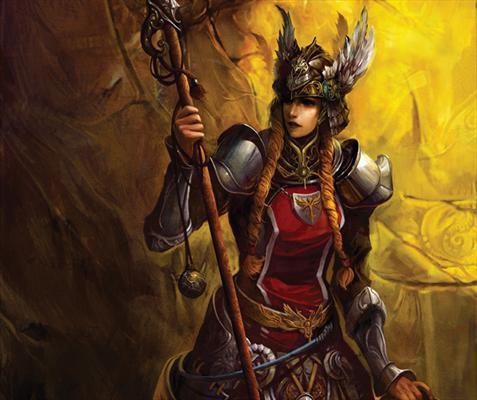
Bryan Magee’s The Tristan Chord
By Greg Johnson
Ex: http://www.counter-currents.com/
Bryan Magee
The Tristan Chord: Wagner and Philosophy [2]
New York: Metropolitan Books, 2000
Bryan Magee’s The Tristan Chord: Wagner and Philosophy (just Wagner and Philosophy in the UK) combines two of my favorite subjects into an informative, stimulating, and highly readable book. Creativity and critical reflection are two very different activities, and excellence in one is seldom accompanied by excellence in the other. Thus Richard Wagner was virtually unique because he was both a great artist and a serious intellectual.
First of all, Wagner had a remarkably facility for reflection on both his own art and art in general, which he poured into a large number of books and essays on music and drama. Wagner was also widely read in mythology, religion, history, politics, and—at the very pinnacle of difficulty and abstraction—philosophy.
Wagner’s greatest philosophical influences were Ludwig Feuerbach and Arthur Schopenhauer, particularly the latter. Furthermore, Wagner did not merely read these philosophers. He understood them profoundly and incorporated their teachings into the living substance of his greatest artistic achievements.
Sometimes theories can get in the way of authentic artistic expression. But not so with Wagner, for when he read Feuerbach and especially Schopenhauer, they did not so much furnish his mind with new ideas as articulate and thus strengthen the intuitions that he held all along. Philosophy, in short, was an aid to authentic existence and creativity. It cleared away confusions and impediments and helped Wagner become who he really was.
The Tristan Chord is a fugue that simultaneously follows Wagner’s development in four different areas: (1) his operas, (2) his theory of opera, (3) his political thought, and (4) his philosophy of life. (Unkind reviewers would say that the book jumps around and repeats itself a lot.)
The Operas
For our purposes, Wagner’s 13 operas fall into four groups.
First, there are what could be called Wagner’s juvenilia: Die Feen (The Fairies), Das Liebesverbot (The Ban on Love), and Rienzi. The common denominator of these works is that they were deliberate, self-conscious attempts to write in a particular style. Die Feen is a German Romantic opera in the style of Weber. Das Liebesverbot is an Italianate opera in the style of Bellini. Rienzi is a Parisian Grand Opera in the vein of Meyerbeer.
Wagner later repudiated these operas as calculating, commercial, and thus inauthentic. But, as Magee points out, for all that, they are still good. Die Feen and Das Liebesverbot were written when Wagner was 19 and 20, and Magee correctly remarks that they are better than anything Mozart or Verdi composed at that age. Furthermore, Rienzi is better than anything by Meyerbeer. Although Wagner expressly excluded these works from performance at Bayreuth, they should be performed more regularly, and what better place to do it than the international Wagner festival?
The next three operas are Wagner’s early mature works: The Flying Dutchman, Tannhäuser, and Lohengrin. The common denominator is that they are authentic expressions of Wagner’s mature artistic style, yet they predate Wagner’s theoretical works on opera and drama and his encounters with the philosophies of Feuerbach and Schopenhauer.
Wagner’s middle period consists of the four operas of The Ring of the Nibelung: Das Rheingold, Die Walküre, Siegfried, and Götterdämmerung. These works are deeply marked by Wagner’s early theory of opera, his revolutionary political engagement, and the philosophy of Feuerbach.
Wagner’s final period consists of three operas: Tristan and Isolde, The Mastersingers of Nuremberg, and Parsifal. What unites them is that they reflect Wagner’s mature views on the nature of opera and drama, politics, metaphysics, and the spiritual life, for which Schopenhauer was the indispensable philosophical midwife.
This chronology is somewhat muddled by the fact that although Wagner conceived and wrote the Ring libretto well before he began work on Tristan and Isolde and The Mastersingers, he composed both operas before completing the music for the Ring cycle. Nevertheless, the Ring and the last three operas belong to distinct phases in Wagner’s musical and intellectual development.
The Theory of Opera
Beginning in 1849, Wagner began to elaborate a theory of opera and drama in such books and treatises as The Art Work of the Future (1849), Art and Revolution (1849), Opera and Drama (1850–51), and A Message to My Friends (1851). Twenty years later, Wagner made important changes to his theories in such works as Beethoven (1870) and The Destiny of Opera (1871).
The core of Wagner’s theory of opera are his views of the nature and aesthetic potential of opera. Modern opera was a conscious attempt to revive ancient Greek drama, which had musical accompaniment. Wagner regarded classical Athenian drama as a pinnacle of artistic achievement.
First, classical drama had enormous expressive powers because it combined a whole range of arts, including poetry, music, acting, mime, and even painting and architecture for the staging. This is the idea of the “total work of art,” the Gesamtkunstwerk.
Second, classical drama focused on mythical themes that were shared by the whole community and in which each individual could find personal meaning.
Third, classical dramas were sacred and communal rather than profane, private, and commercial. They were subsidized by the state and performed as part of religious rites in which the whole population took part. Greek drama fused art, religion, and politics. It was a collective, celebratory experience of the community’s self-awareness of its common origins, nature, and destiny. These views remained essentially the same.
What changed were Wagner’s views of the relative importance of music and other dramatic elements within opera. Wagner believed that drama and especially music had made remarkable progress since ancient Greece. Shakespeare was a better dramatist than Aeschylus or Sophocles because he penetrated more deeply into character and motive. And Beethoven had vastly expanded the emotional power of music. But even with these advances, modern opera failed to realize its artistic potential and remained inferior to ancient Greek tragedy. Wagner set out the correct that.
In his early theory of opera, Wagner sought to create a greater unity between words and music by dispensing with the dichotomy between recitative and aria; eliminating purely musical forms, such as the da capo aria, which contained dramatically needless repetitions; dropping dramatically unintegrated showpieces for virtuoso singers; eliminating ensembles for multiple singers which are musically effective but make it impossible to understand the words; clarifying orchestration so that the music did not overwhelm the words, and the like. The aim was to make music and drama entirely complimentary, to compose music that underscores rather than overwhelms our experience of drama. In effect, Wagner was inventing the “soundtrack,” and indeed, Wagner was the single greatest influence on movie scoring. Wagner put this theory into practice in Das Rheingold and the first act of Die Walküre.
But although Wagner was right to prune back some of the musical-dramatic imbalances of earlier forms of opera, he gradually abandoned strict parity between music and words, first by following his own muse and later through his encounter with the aesthetic theory of Arthur Schopenhauer
Schopenhauer argued that music has greater emotional power than all other art forms because it has greater metaphysical depth. Representational art shows us Platonic forms or ideas, whereas music (like sex) offers us direct experience the primal metaphysical reality which Schopenhauer called will.
Wagner’s use of music was analogous to the chorus in Greek drama: but the Greek chorus merely explained the inner meaning of the events represented on stage whereas the orchestra can actually make you feel them; music actually allows one to feel what the characters feel. Magee does, however, point out that Wagner never abandoned the various musical-dramatic innovations of his earlier theoretical works, using them to great effect.
But the music was primary, and indeed, music has always been primary in opera. The flimsiest plots can become absolutely compelling if set to music. And no matter what his theory, Wagner never lost sight of music’s divine and magical powers. Thus even in Das Rheingold, at the very end, he uses pure music to remind us that, for all their corruptions and follies, the gods are still gods.
Indeed, Wagner’s mature, Schopenhauerian operas, Tristan and Isolde, The Mastersingers, and Parsifal, can be seen as evolving out of distinct musical-emotional ideas, just as Schopenhauer believed the world of representation arises out of the primal will. In Tristan the musical-emotional seed is erotic longing. In The Mastersingers it is what I call “generativity,” namely the self-renunciation of the old to foster the next generation. In Parsifal it is what I call “abjection,” the feeling of guilt and the need for absolution, the feeling that mankind is incapable of solving the problems of life without the supplement of some sort of supernatural grace. Furthermore, as the music gained in primacy, the libretti shrank: Tristan and Parsifal have the fewest words among Wagner’s operas, and Parsifal is one of the longest.
Wagner’s Politics
Magee’s discussion of Wagner’s politics aims at refuting the idea that he was some sort of Right-wing proto-fascist.
Magee argues that Wagner a Left-wing revolutionary in his youth. Specifically, Wagner was heavily influenced by the Young Germany movement of Heinrich Laube (1806–1884) and the anarchism of Pierre-Joseph Proudhon (1809–1865) and Mikhail Bakunin (1814–1876).
Wagner’s anarchism valorized a pre-industrial Hobbit-like society of small, independent farmers and craftsmen. The principles of this form of society were nature, which puts limits on acquisition, and love, which puts limits on exploitation. This anarchistic utopia was destroyed by industrialism and usury, creating a miserable, landless proletariat toiling to heap up riches for capitalists. Capitalism is founded on the rejection of love for the pursuit of power and of nature for artifice and the pursuit of unlimited wealth.
Wagner’s critique of capitalism is reflected in the third scene of Das Rheingold, where the Nibelung dwarf Mime laments the loss of the Nibelung’s traditional life as independent craftsmen to his tyrannical brother Alberich, who has forsworn love in order to steal the Rhine gold, from which he fashioned a magic Ring, which he has used to enslave the Nibelungen and make them toil in mines and factories to heap up riches for himself. Wagner hoped that the revolution would break the rule of power and greed and inaugurate a new form of society based on love and nature.
Wagner combined this anarchist-socialist outlook with German nationalism. But, as Magee stresses, German nationalism was, in its time, a Left-wing political cause too. In particular, Wagner was deeply influenced by the Young Germany movement, which preached German national and cultural regeneration after the humiliations of the Napoleonic conquest. They wished to unify Germany under a republican regime. They were also socialists and advocates of sexual freedom.
Magee’s argument, however, hinges on a superficial fixation on the categories of Left and Right as opposed to an appreciation of the substance of Wagner’s positions. Yes, when Wagner was a young man, his German nationalism and critique of capitalism were Left-wing positions. But the substance of Wagner’s anarchism was essentially conservative and backward-looking. Furthermore, Wagner’s combination of nationalism and conservative anti-capitalism is pretty much the paradigm of 20th-century fascism, National Socialism, and their New Right successors. Finally, Wagner surely would have rejected the substance of most of what passes for Left-wing opinion today. There is little doubt that if Wagner were alive today, he would be aligned with the European New Right.
Magee also argues that, contrary to widespread belief, Wagner did not become more conservative as he grew older but merely gave up the idea that politics could solve man’s most important problems. Thus, Magee concludes, Wagner did not embrace conservative politics but merely became apolitical. This argument, however, strikes me as sophistical, for a large part of conservatism is precisely the conviction that the most important problems of life cannot be solved by politics. Furthermore, it ignores the fact that the substance of Wagner’s youthful anarchism was a critique of capitalism from a deeply conservative, anti-modernist perspective
Feuerbach
Ludwig Feuerbach (1804–1872) was the first German philosopher to exercise an important influence on Wagner. Feuerbach was one of the Young or Left Hegelians who accepted Hegel’s basic philosophical framework but argued that Christianity and the modern state, including modern capitalism, are not the end of history and that we can evolve beyond them.
To find a lever and a place to stand in order to critique Hegel’s system, Feuerbach embraced materialism and atheism. Feuerbach argued that gods and religious myths are merely projections and reifications of human nature. Thus, although there are no gods and all religions are false, religion is still deeply important, because it provides insight into human nature.
Wagner embraced Feuerbach’s view of religion when he was writing the Ring, which is the story of the destruction of the gods and the beginning of the age of man. Magee argues that on religious matters, Wagner remained a Feuerbachian for the rest of his life. This is plausible, for even though Schopenhauer convinced Wagner that there is a metaphysical dimension beyond the material world, Schopenhauer himself was an atheist, albeit one who also recognized the importance of religion for gaining insight into human nature.
Nevertheless, I wish that Magee had showed how his thesis is consistent with Wagner’s many remarks on Christianity, particularly those recorded in the diary of his wife Cosima, for they certainly do not sound like the views of an atheist. Wagner clearly wished to sever Christianity from its Jewish and Catholic roots and remake it as a Germanic folk religion, and perhaps he regarded it merely as an exoteric cult in which he did not believe. But if so, he kept up the pretense even in front of his wife.
Moreover, Wagner’s last opera Parsifal, which deals with the knights of the Holy Grail, is definitely not orthodox Christianity in any sense. It even contains elements of Buddhism and Schopenhauer. But for all that, the Grail and the Spear of Longinus still perform magic, and I find it impossible to listen to the music and conclude that Wagner did not believe in that magic.
Feuerbach’s social and political philosophy was largely consistent with Wagner’s pre-existing Young Germanist and anarchist-socialist convictions. As a materialist and atheist, Feuerbach was convinced that nature allows human beings to be happy on earth if they act properly: if they love one another and keep their desires for material goods moderate and within natural bounds. He believed that love was man’s greatest need and satisfaction. He also believed that love makes possible a social order that is free of coercion and exploitation. Injustice arises when human beings reject loving and being loved for the pursuit of power and wealth, transgressing nature’s limits by acquiring unnecessary and excessive material possessions. Revolution is necessary to overthrow the tyrants and exploiters and to institute a more egalitarian society based on love and in harmony with nature.
Wagner first encountered Feuerbach’s writings in the 1840s. His principal works are The Essence of Christianity (1841) and The Principles of the Philosophy of the Future (1843). But Wagner’s most intense engagement with Feuerbach began in 1849, when he was an exile in Switzerland where he fled after the collapse of the 1849 Dresden revolution, of which he was a ringleader along with Bakunin. Wagner’s The Art Work of the Future (1849) is dedicated to Feuerbach and bears a distinctly Feuerbachian title. But Wagner’s greatest tribute to Feuerbach is the Ring cycle itself, which is constructed around the antithesis of the principles of love and power, puts forward a revolutionary critique of tradition, capitalism, and sexual repression, and culminates with the death of the gods and the beginning of the age of man.
Schopenhauer
Wagner was such a man of ideas that Feuerbach’s influence could only be surmounted by that of a greater philosopher: Arthur Schopenhauer (1788–1860), who Wagner discovered in the fall of 1854 while he was writing the music of Die Walküre. The treatment of Schopenhauer is the most interesting part of the book. Magee obviously relishes the subject, for just as Wagner is his favorite composer, Schopenhauer is his favorite philosopher. Magee is also the author of The Philosophy of Schopenhauer (Oxford: Oxford University Press, 1997), a masterful overview of Schopenhauer’s thought with an appendix on Wagner and Schopenhauer that is as long as Magee’s earlier book Aspects of Wagner [3].
Wagner was well-prepared to appreciate Schopenhauer. According to Wagner’s autobiography My Life, when he first encountered Schopenhauer, he felt that Schopenhauer was articulating his most longstanding and heartfelt intuitions. He had always already been a Schopenhauerian. Furthermore, according to Magee, Wagner was deeply disillusioned with radical politics and had retreated into solitude, where he had lost himself in composing Das Rheingold and Die Walküre, the latter of which he was writing at astonishing speed, in a frenzy of inspiration, when he first picked up Schopenhauer in the fall of 1954.
It scarcely seems possible that in such a state, Wagner would have the mental energy to read and digest the two volumes and 1,000+ pages of Schopenhauer’s The World as Will and Representation, which, although it is one of the most lucid and brilliantly written philosophical works of all time, still deals with weighty and difficult topics. But Wagner went on to read The World as Will and Representation four times within one year, and it was his inseparable companion for the rest of his life.
Schopenhauer caused Wagner to revise his explicit views on three subjects: materialism, optimism, and the place of music in opera. (I have already touched on the third topic above.) Unlike Feuerbach, who claimed that the material world was the only reality, Schopenhauer argued that the material world (what he called “the world as representation”) does not exhaust reality. There is another dimension of reality, what Kant called the “thing as it is in itself” and what Schopenhauer calls “the world as will.” Schopenhauer taught that the will is a blind, purposeless striving, which can never find satisfaction. He believed that the will is at the root of all natural and human phenomena: the life force, the sex drive, etc. We are generally unconscious of the workings of the will within us, but it can be experienced most fully through sex and music. He believed that man’s conscious mind, including our rationality, is ultimately conditioned by the will. Thus man is largely an irrational animal.
Schopenhauer’s doctrine of the will largely destroys the optimism of those like Feuerbach and the anarchists who believe that human beings can be happy once we create a form of society in which human striving is moderated by reason to stay within the limits of nature. For Schopenhauer, human striving can never harmonize with the limits of the natural world (the world as representation) because human action arises from the world as will, which is blind, irrational, and unbounded. Thus human beings in the grip of the will are doomed to excess, conflict, and misery in our earthly existence. For Schopenhauer, life is essentially tragic, and optimism is folly.
These ideas represented a fundamental rejection of Wagner’s conscious convictions at the time: he was a Feuerbachian materialist and an optimist. But when he looked back at his operas—The Flying Dutchman, Tannhäuser, Lohengrin, and the Ring cycle—he realized that his conscious philosophy had always been out of sync with his deepest intuitive convictions as expressed in his art. Schopenhauer had liberated Wagner from a false self-understanding, harmonizing his conscious and unconscious minds and laying the groundwork for his greatest mature works, his Schopenhauerian operas: Tristan and Isolde, The Mastersingers, and Parsifal.
Schopenhauer taught that man is doomed to suffer unless he can break the power of the will within him. Schopenhauer calls this redemption. Redemption is possible through three paths: the way of suffering, as when the cancer patient “lets go” and ceases to fear death; the aesthetic path of contemplating beauty, which in Kant’s terms is “disinterested,” meaning that it stills the striving of the will within us; and the religious path, in which the experience of compassion reveals the fundamental oneness of all beings and the illusory nature of the conditioned, suffering ego.
Redemption cannot be willed, because the will is the root of our bondage. Thus redemption must come to us from without, or from above, as a kind of supernatural grace, and the only thing that we can do is prepare a space for it and make ourselves receptive. Redemption cannot, therefore, be achieved by revolutionary politics or any other kind of purposeful action. But it can be experienced collectively through artistic performances and religious rituals, which create a space and attune the soul for the reception of redemption, which may or may not come. Ritual and art, of course, are fused together in Greek Tragedy . . . and in the Wagnerian Music Drama.
Redemption through “breaking of the will to live” is precisely the sort of lugubrious teaching one would expect of history’s greatest pessimist. But if Schopenhauer had been so inclined, he could have formulated redemption in a much more appealing way. The breaking of the will to live is actually equivalent to conquering the fear of death, and if one does not fear death, one has conquered all lesser fears as well.
For Schopenhauer, redemption has to be redemption in this life. He did not advocate suicide, much less regard it as redemptive. Nor did he believe in the survival of the individual soul after death. Thus for Schopenhauer, one goes on living after one attains redemption. But one’s life is no longer in the grip of the will. But how?
The will wills only one thing: to keep on willing. It is a will to self-preservation. And it rules us, ultimately, through our fear of death, which is, for most people, the greatest of all fears. Thus breaking the will’s power is equivalent to losing one’s fear of death, and with it, one loses all lesser fears as well.
Thus the redeemed individual lives a life without fear, and fear is the root of all vice and the main impediment to self-actualization and duty. Thus, paradoxically, what Schopenhauer calls breaking the will to live is actually the primary condition for a truly realized and happy life, but as a pessimist, he would not put it that way.
Wagner’s last three operas are all about redemption, and Magee devotes three of his best chapters to Tristan and Isolde, The Mastersingers, and Parsifal. Schopenhauer thought that sex gave us profound insight into the nature of the will, but it was ultimately a form of bondage, not a path to redemption. But even after he read Schopenhauer, Wagner never abandoned his belief in the redemptive power of love. The Ring cycle ends with a musical theme called “Redemption through love,” but it is not just love, but a love-death: Brünnhilde joins Siegfried on his funeral pyre, and the sparks fly up to consume Valhalla and the gods. Tristan and Isolde deals with the same love-death theme. Schopenhauer thought that lovers’ suicide pacts made no sense. Wagner actually wrote a letter setting Schopenhauer straight, but his argument is inchoate, and the letter was never sent. In the end, he argued the point with some of the most beautiful music ever written. The Mastersingers and Parsifal are more “orthodox” in their Schopenhauerianism. The Mastersingers deals with the redemptive power of art, and Parsifal is about the redemptive power of compassion.
* * *
Magee closes his book with two long chapters, one on Nietzsche, the other on anti-Semitism.
In brief, Magee argues that Nietzsche’s critique of Wagner was entirely unfair and slightly unhinged. He attributes their final break to Wagner’s speculation, which he shared with Nietzsche’s doctor, that Nietzsche’s bad eyesight was due to chronic masturbation. When this got back to Nietzsche, evidently much embellished by the rumor-mill, suggestions of homosexuality had also been added. Nietzsche never forgave Wagner and nursed a resentment for the rest of his life, which expressed itself in increasingly violent and irrational forms as he lost his grip on reality.
As for Wagner’s anti-Semitism, Magee’s goal is damage control. He offers a thorough explanation of Wagner’s views without offering any exculpation, then he argues that, in any case, Wagner’s anti-Semitism does not manifest itself in his operas, despite the claims of a number of Jewish critics.
Both these chapters deserve more extensive commentary, but not on this occasion.
Perhaps the best recommendation I can give The Tristan Chord is that I have read it three times since I first bought it in 2002, and it has richly repaid all my efforts. This is required reading for anyone who wishes to gain a well-rounded sense of Wagner’s intellectual and artistic genius.
Article printed from Counter-Currents Publishing: http://www.counter-currents.com
URL to article: http://www.counter-currents.com/2013/04/bryan-magees-the-tristan-chord/
URLs in this post:
[1] Image: http://www.counter-currents.com/wp-content/uploads/2013/04/tristanchord.jpg
[2] The Tristan Chord: Wagner and Philosophy: http://www.amazon.com/gp/product/080507189X/ref=as_li_ss_tl?ie=UTF8&camp=1789&creative=390957&creativeASIN=080507189X&linkCode=as2&tag=countercurren-20
[3] Aspects of Wagner: http://www.counter-currents.com/2013/03/bryan-magees-aspects-of-wagner/
00:05 Publié dans Musique, Musique | Lien permanent | Commentaires (0) | Tags : musique, richard wagner |  |
|  del.icio.us |
del.icio.us |  |
|  Digg |
Digg | ![]() Facebook
Facebook
mercredi, 20 mars 2013
Imposture du RAP
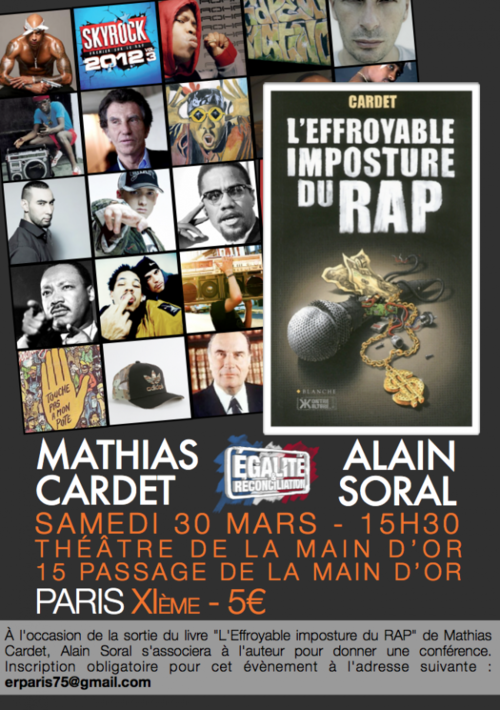
00:05 Publié dans Evénement, Musique | Lien permanent | Commentaires (0) | Tags : rap, musique contemporaine, musique, alain soral, événement, paris |  |
|  del.icio.us |
del.icio.us |  |
|  Digg |
Digg | ![]() Facebook
Facebook
mardi, 09 août 2011
Xavier Raufer sur le rap / La vérité sur le rap
Xavier Raufer sur le rap
La vérité sur le rap
00:05 Publié dans Musique | Lien permanent | Commentaires (0) | Tags : musique, rap, france |  |
|  del.icio.us |
del.icio.us |  |
|  Digg |
Digg | ![]() Facebook
Facebook
mardi, 19 juillet 2011
Himno de Artilleria Española
Himno de Artilleria Española
00:05 Publié dans Militaria, Musique | Lien permanent | Commentaires (0) | Tags : artillerie, armées, militaria, espagne, musique, musique militaire |  |
|  del.icio.us |
del.icio.us |  |
|  Digg |
Digg | ![]() Facebook
Facebook




